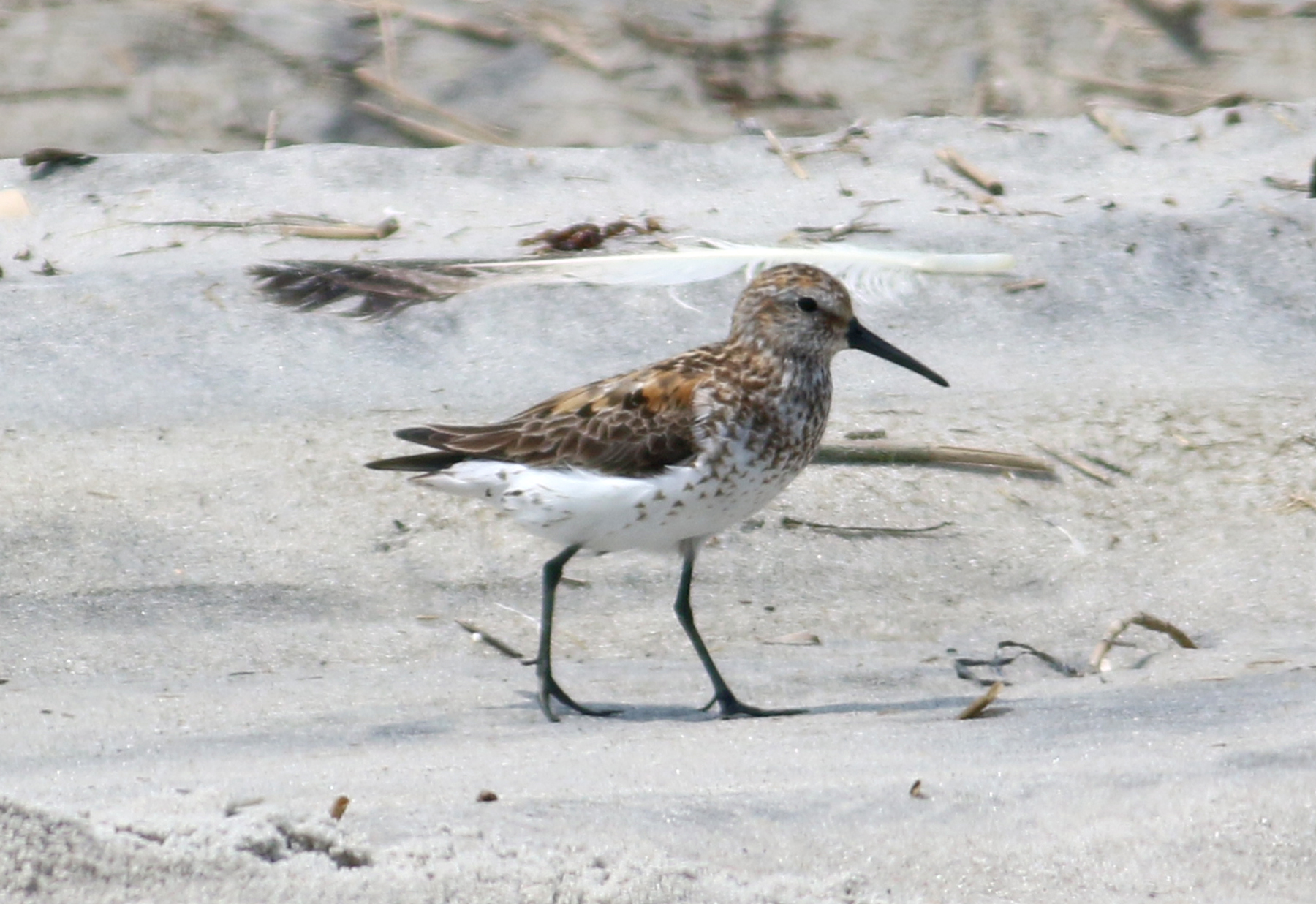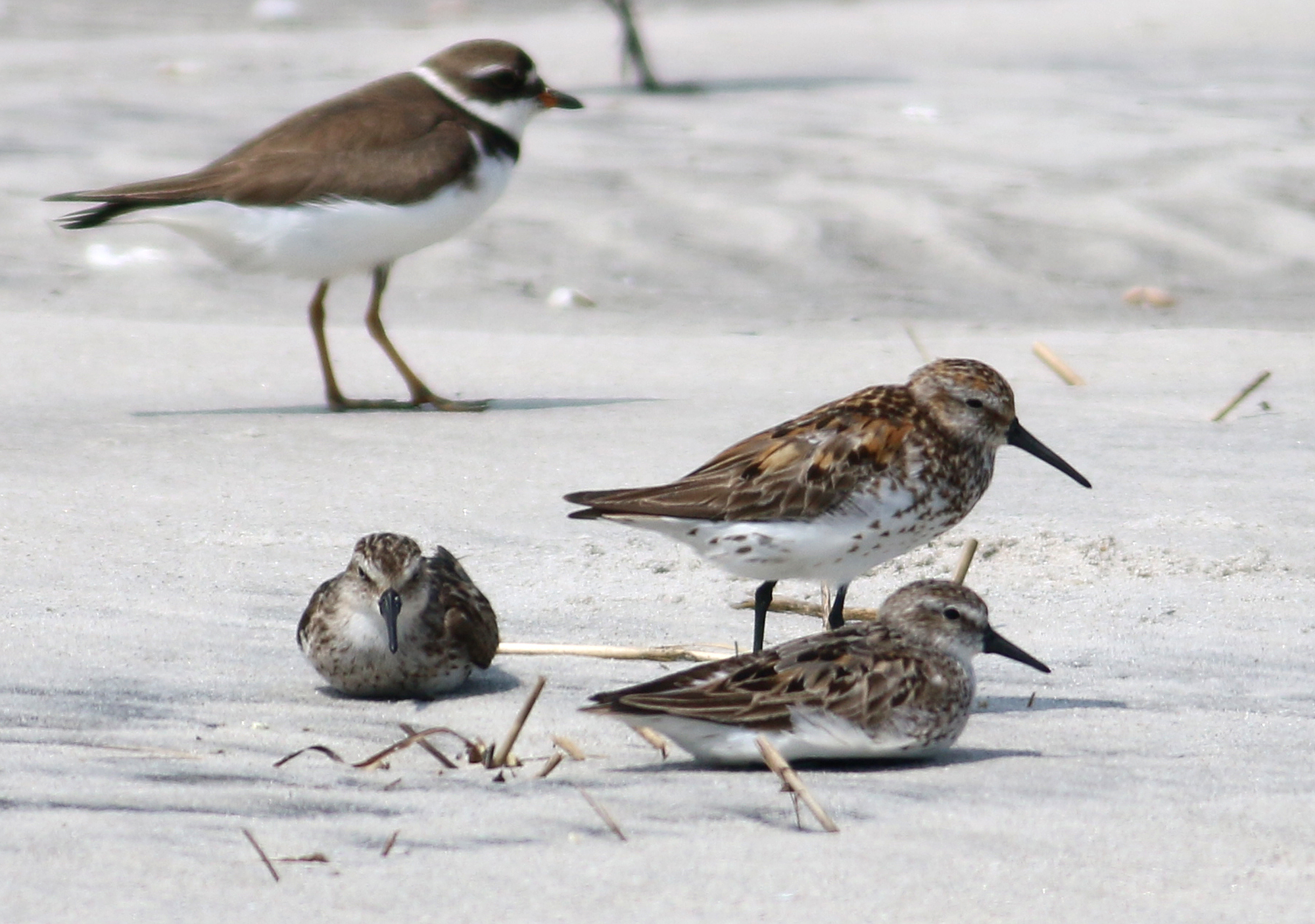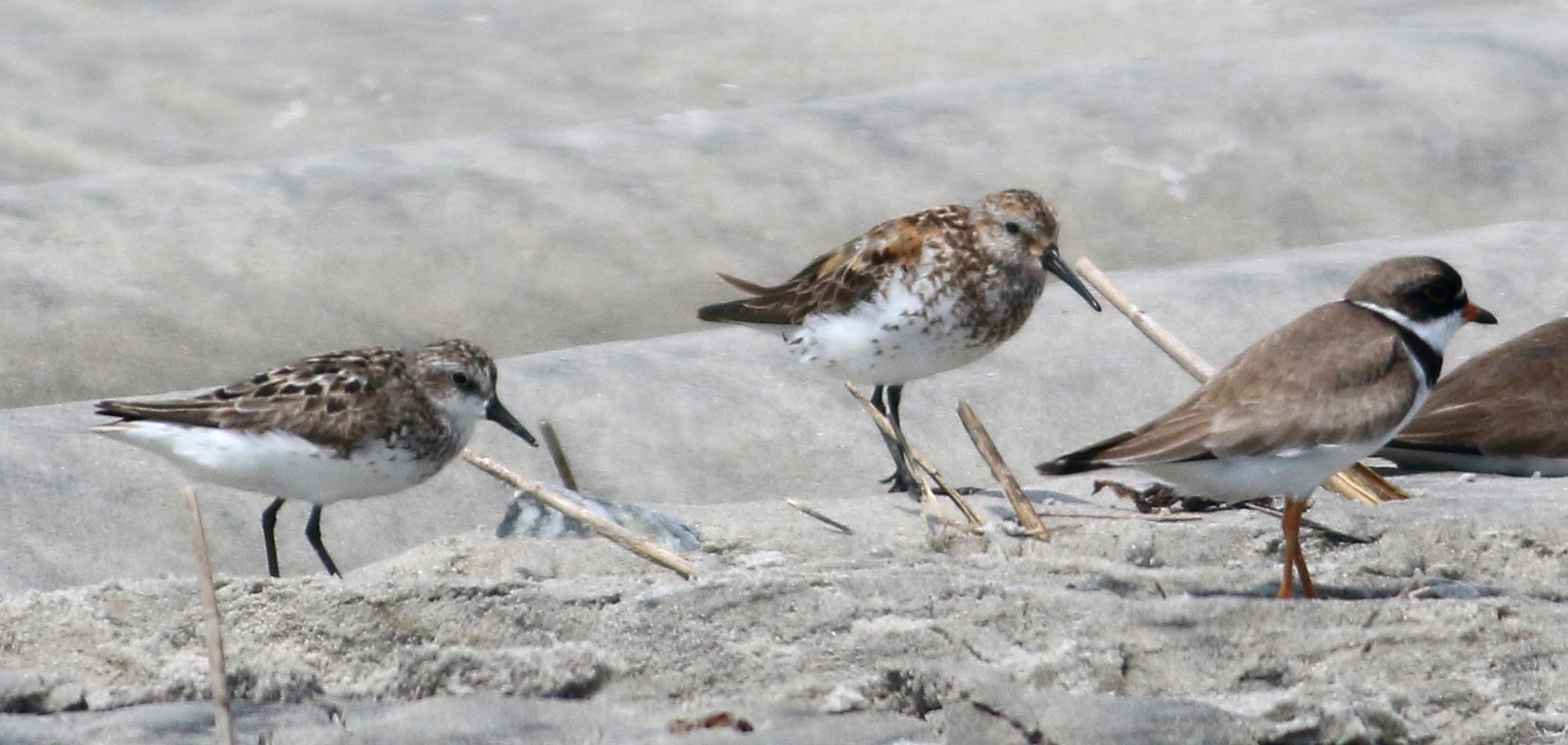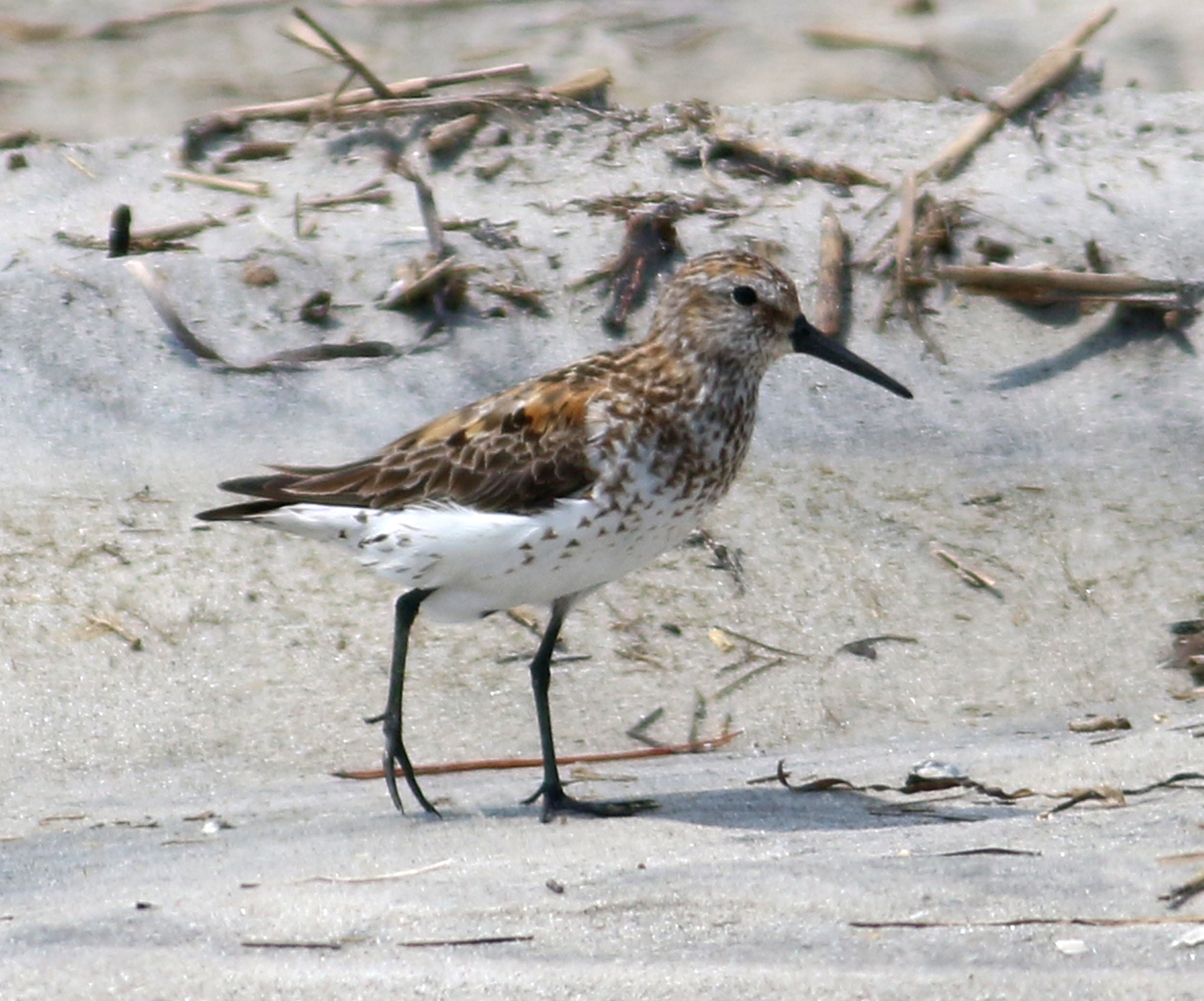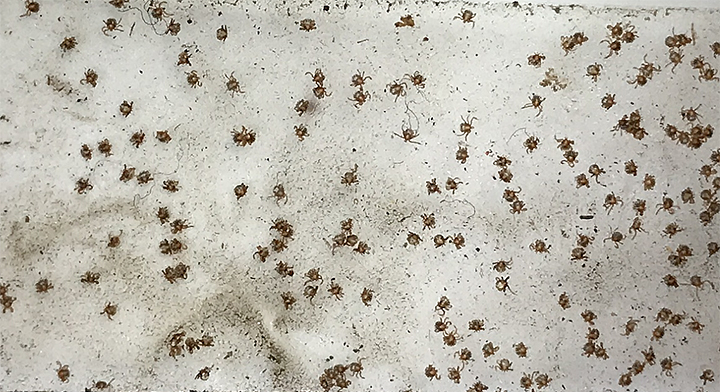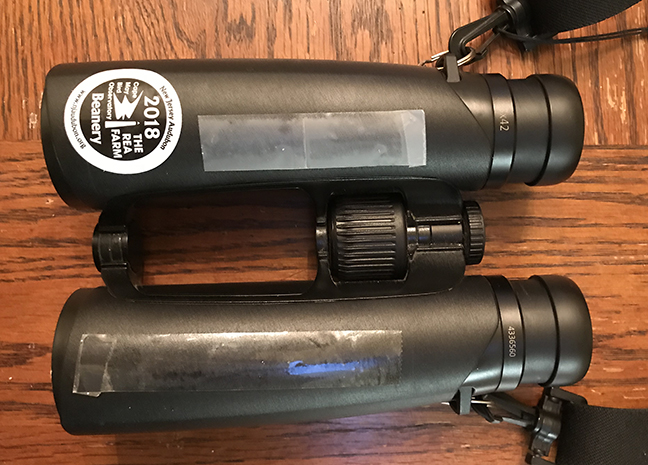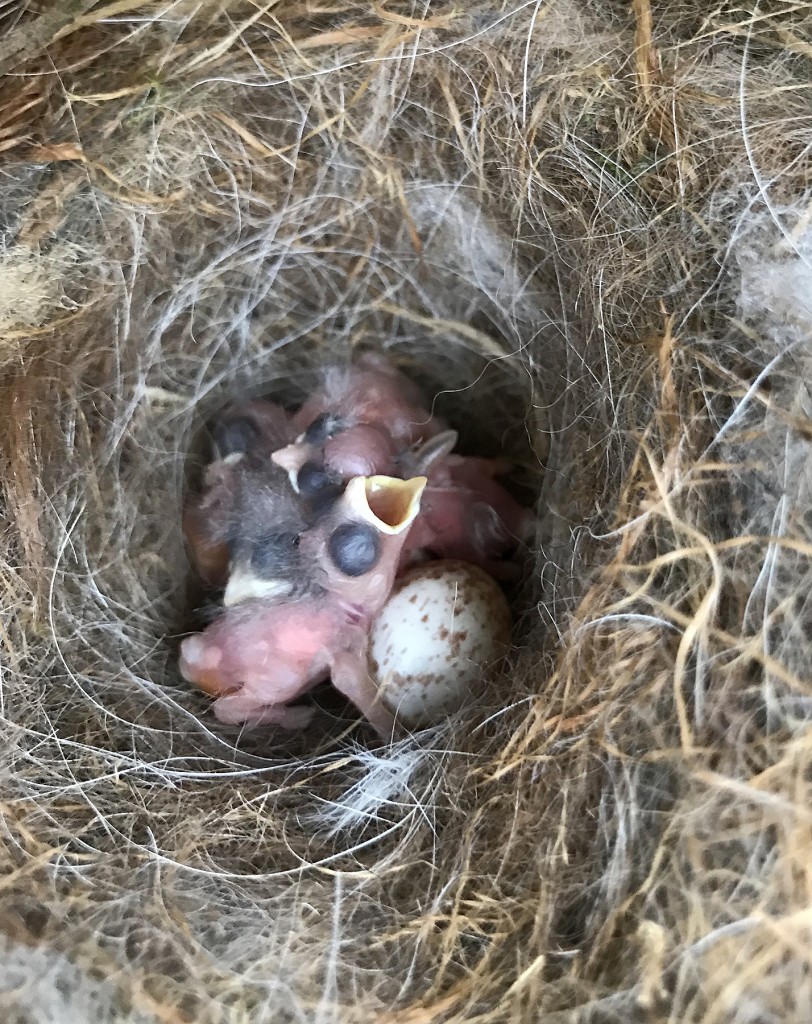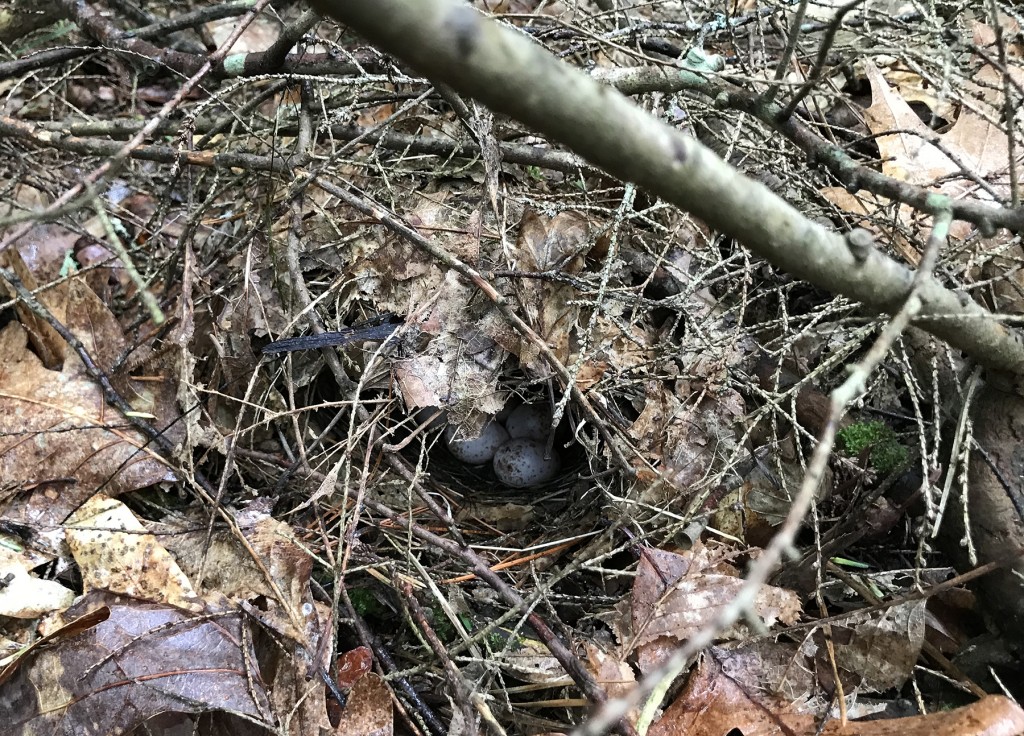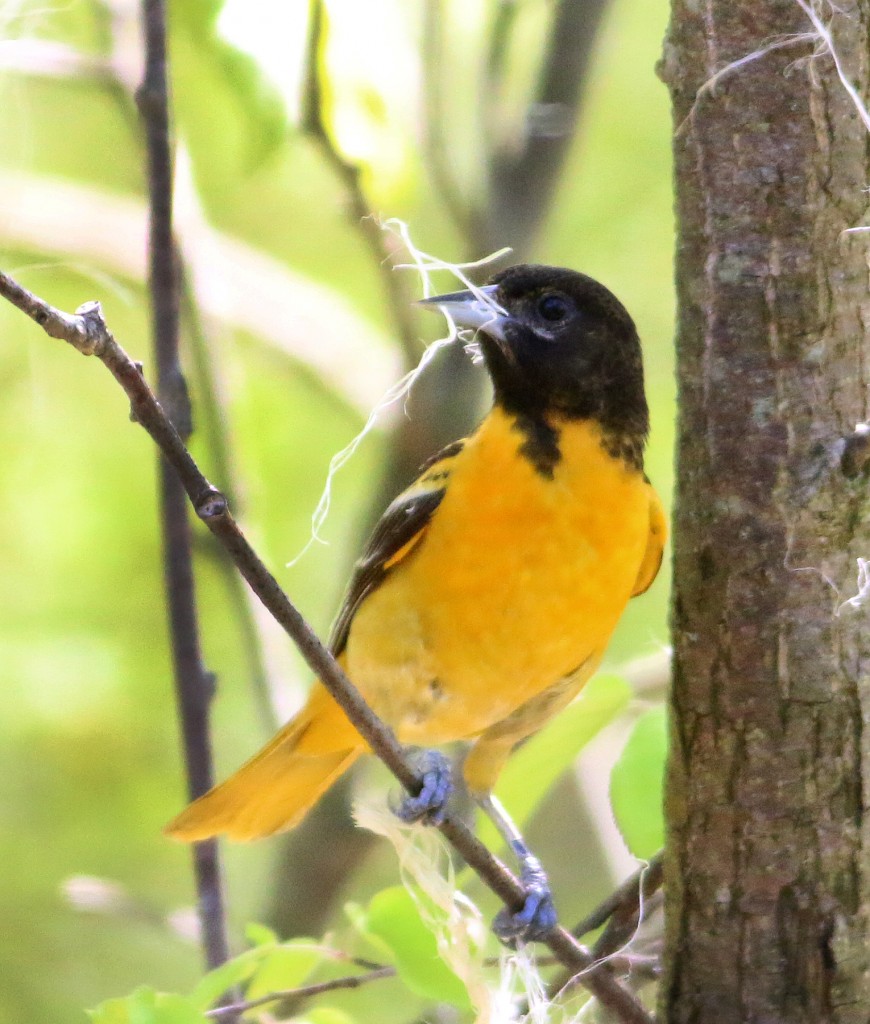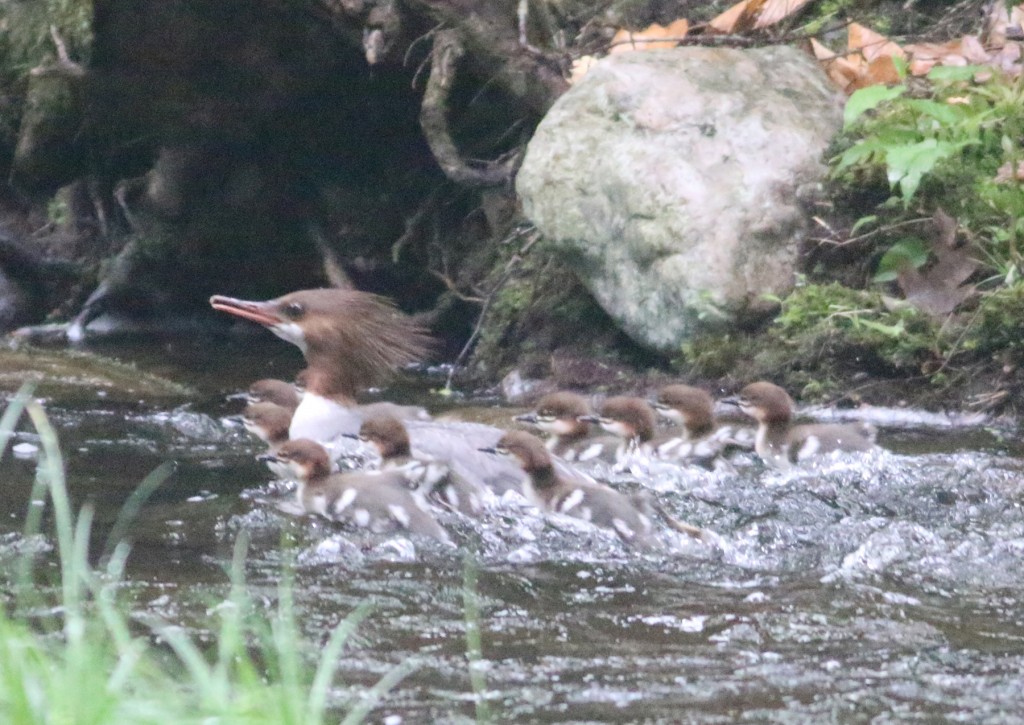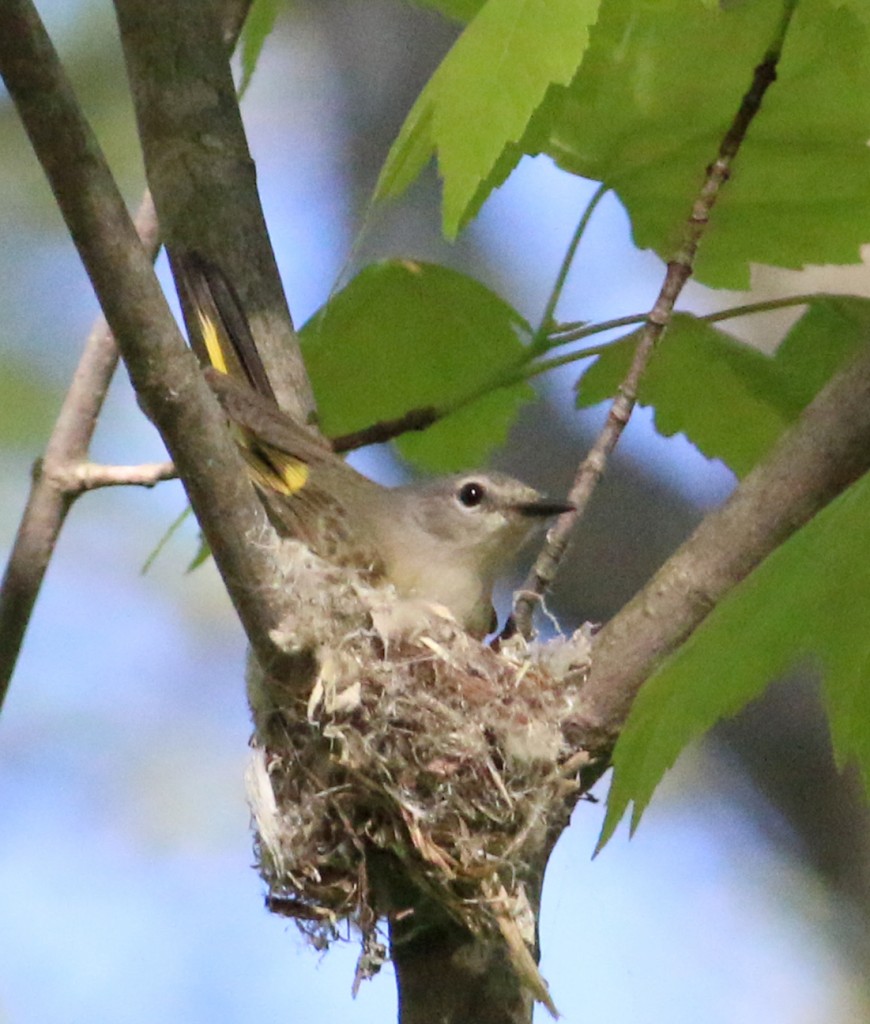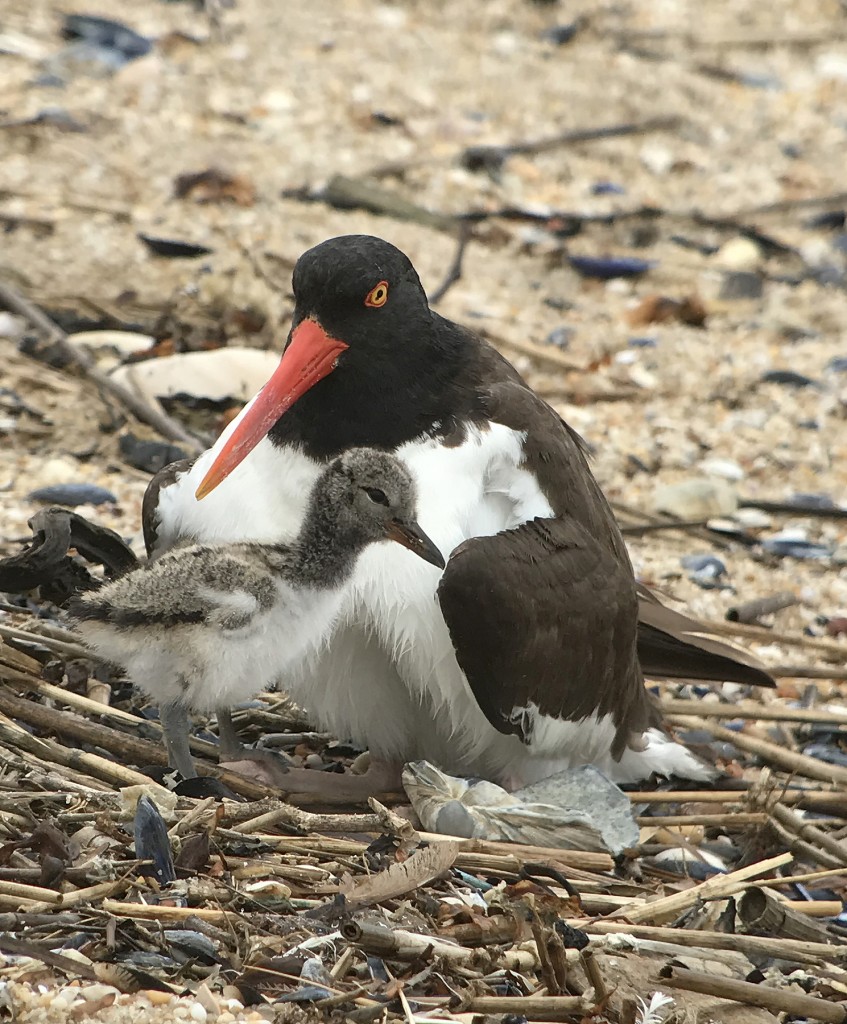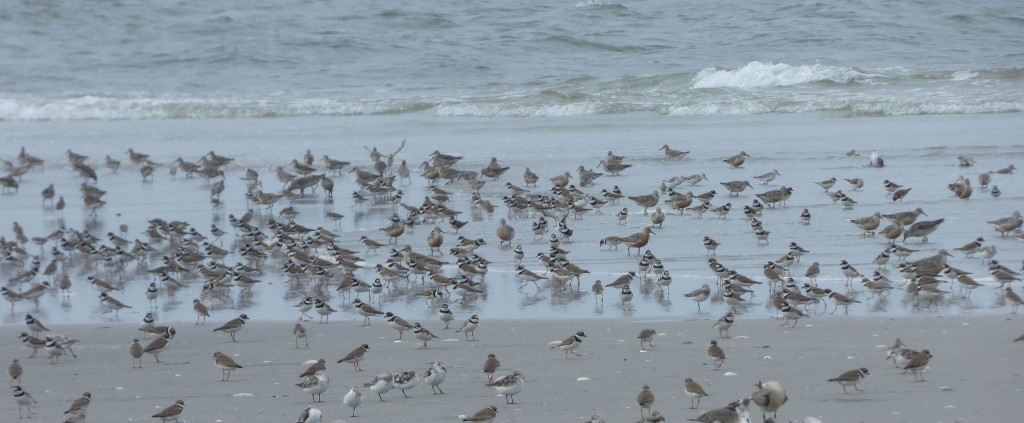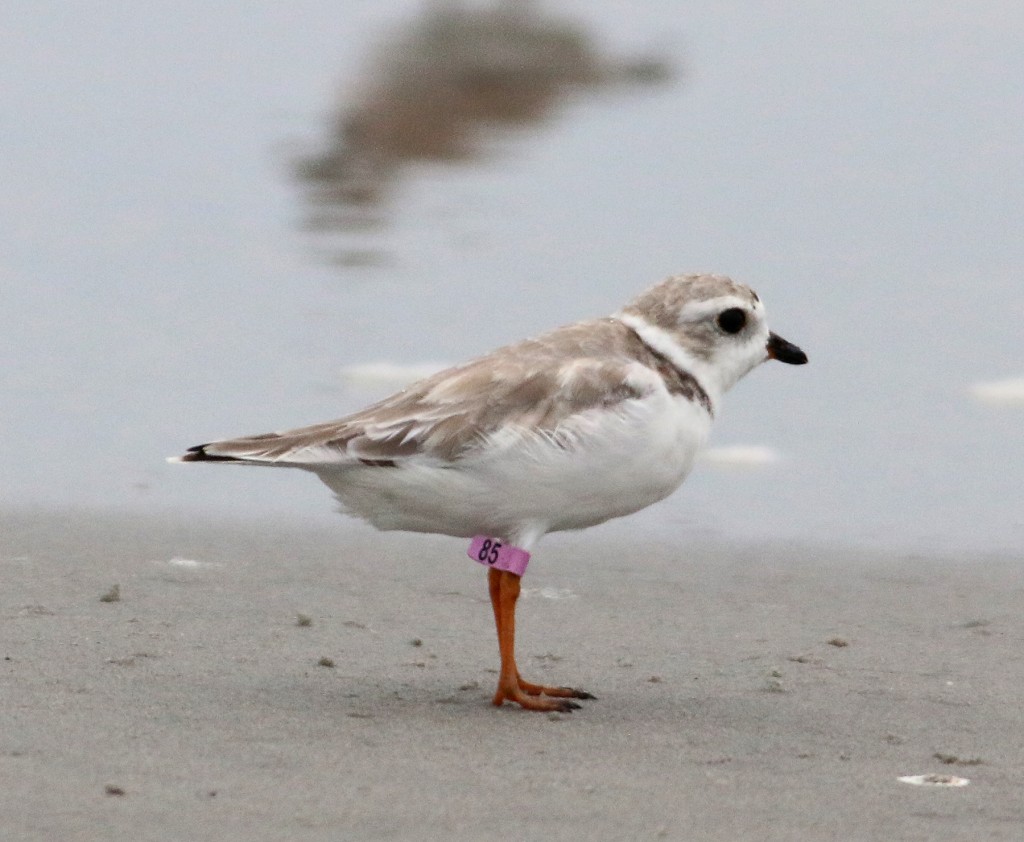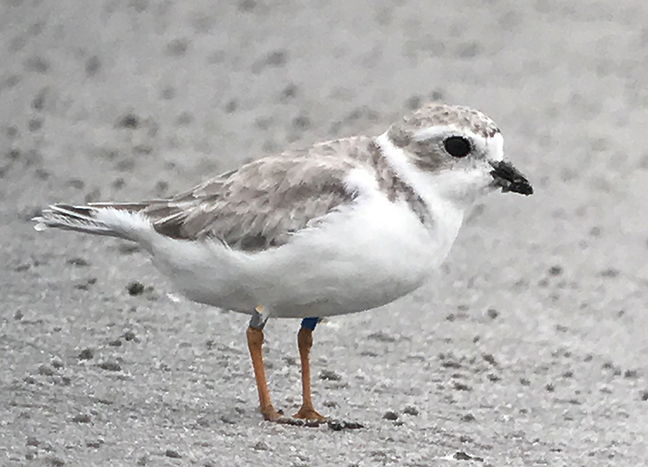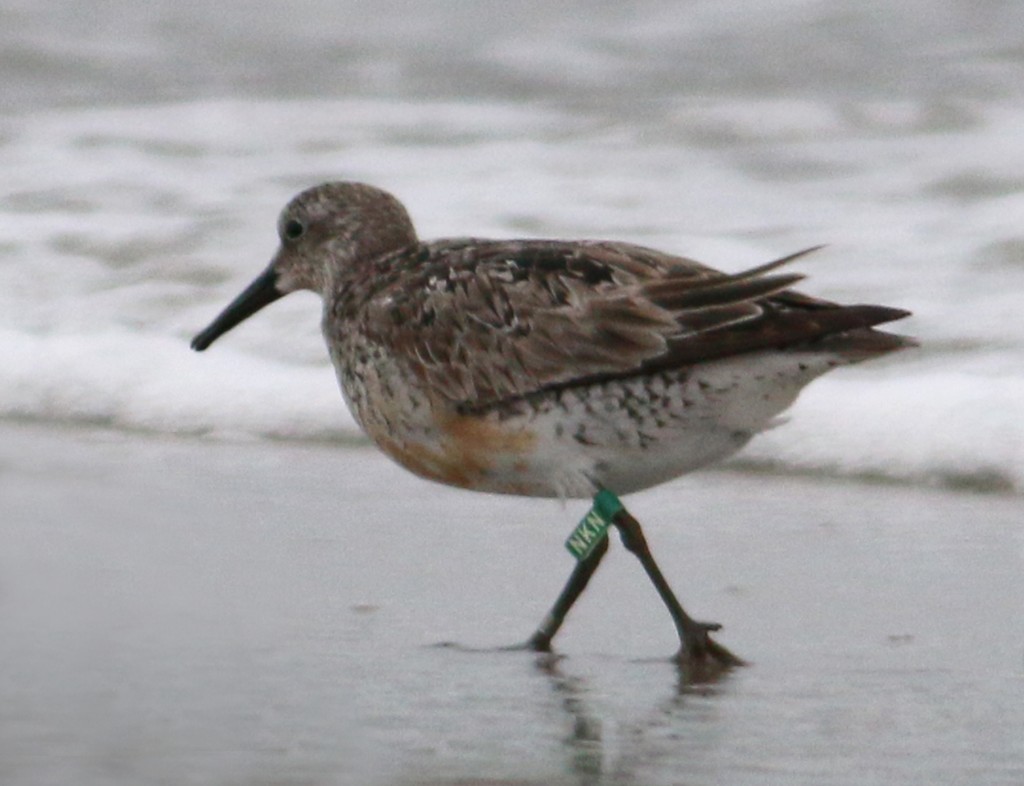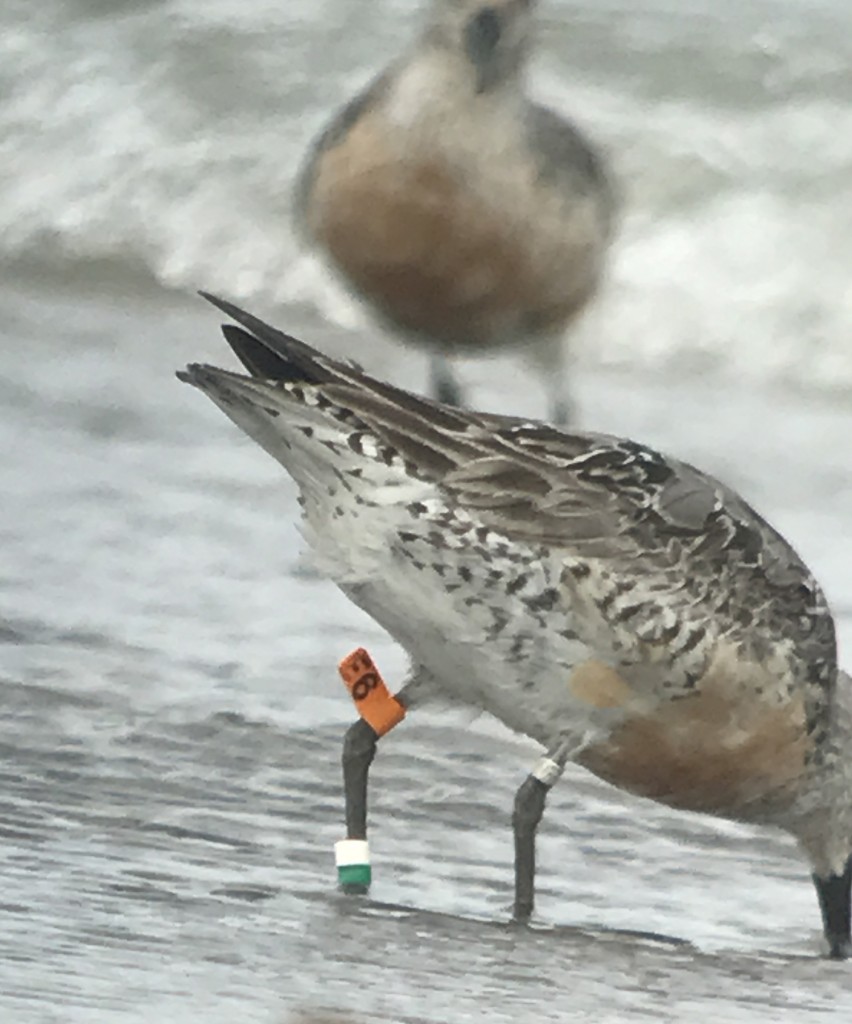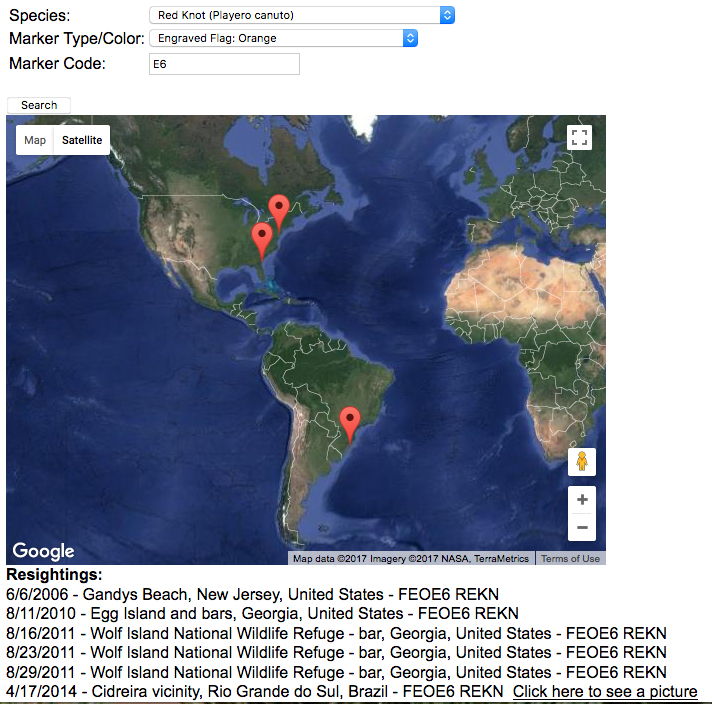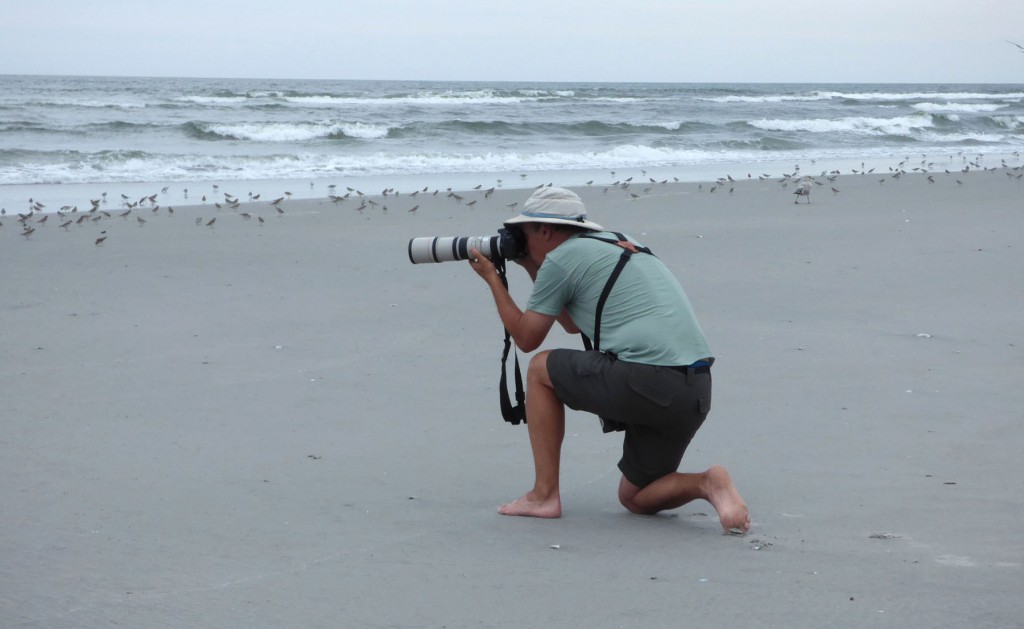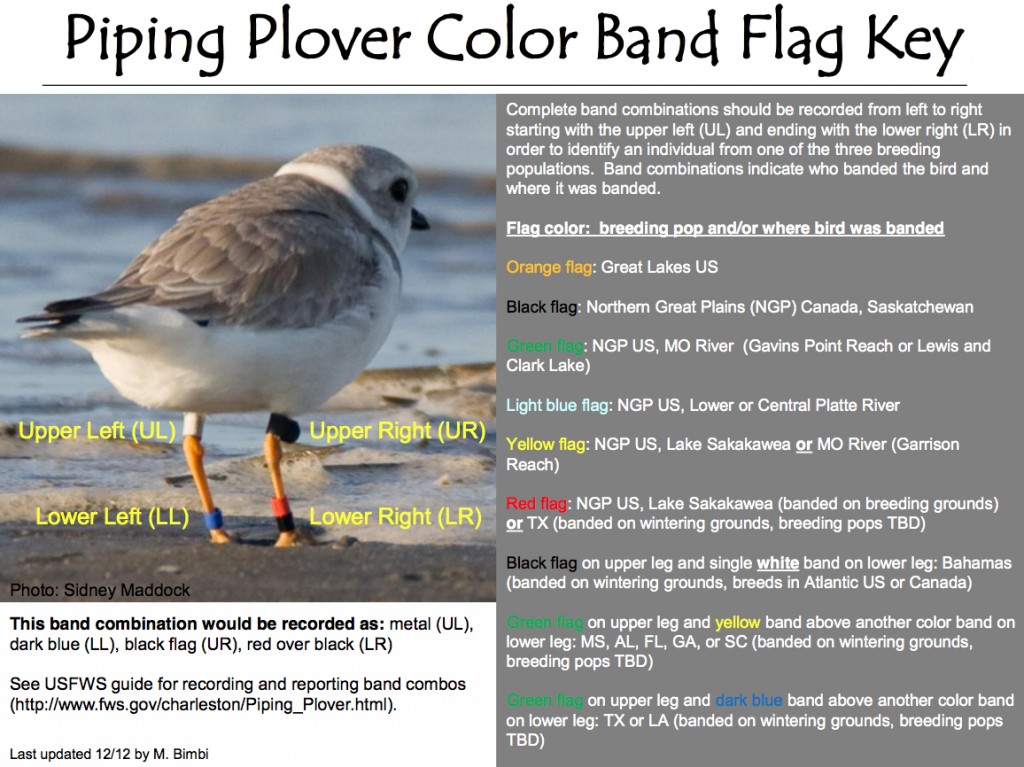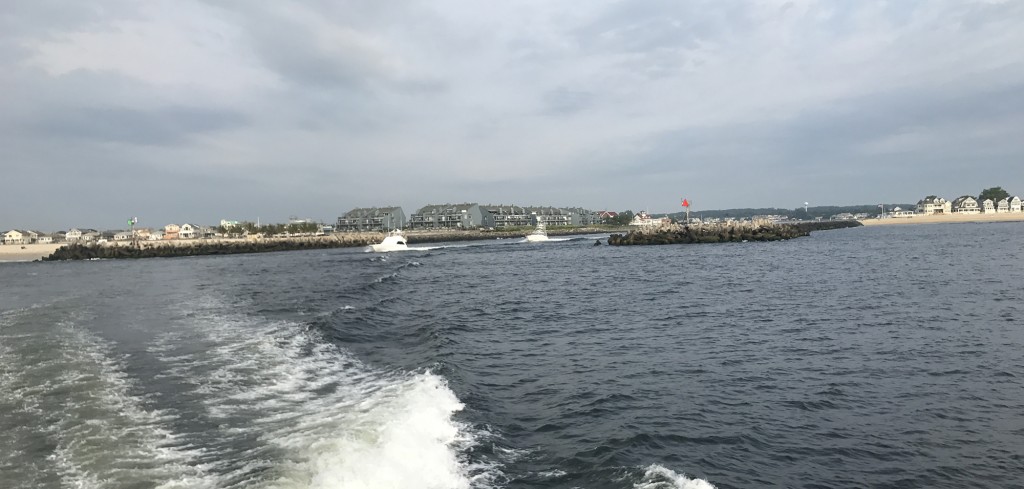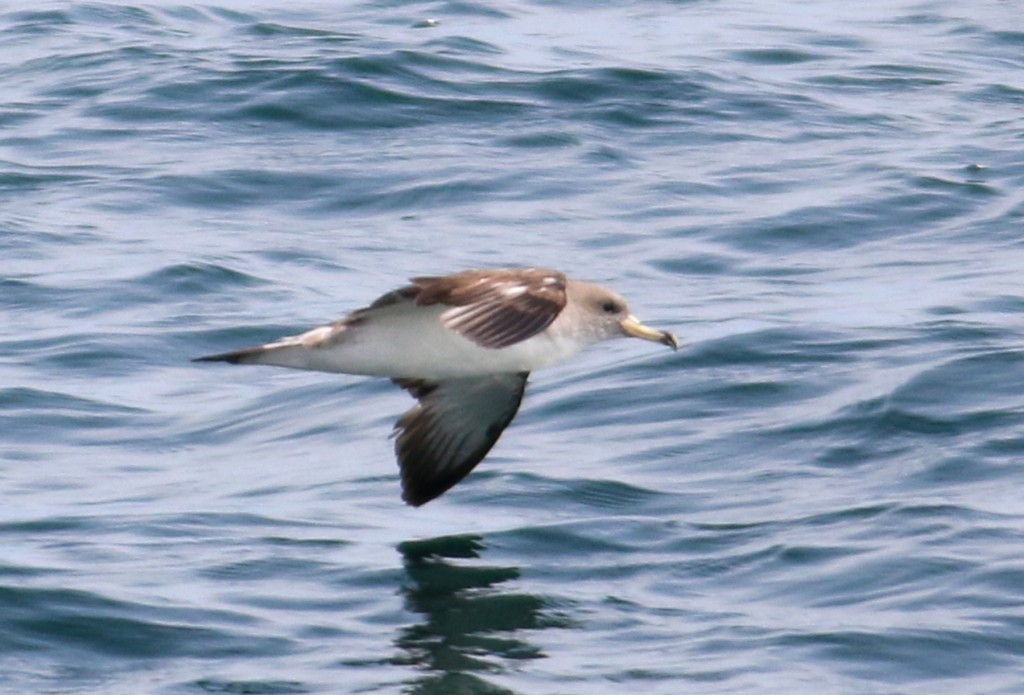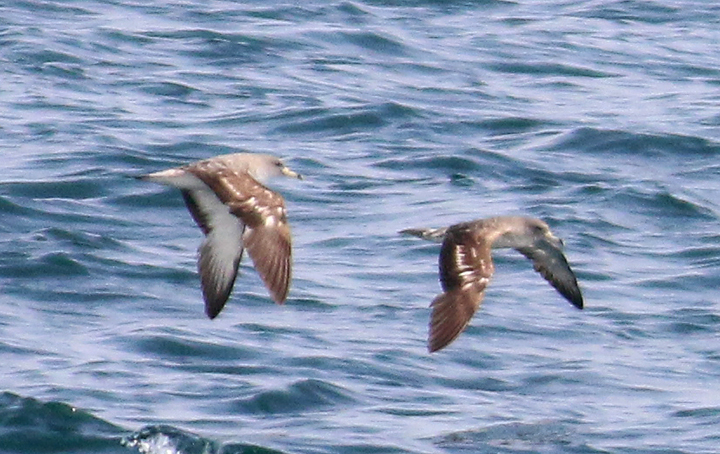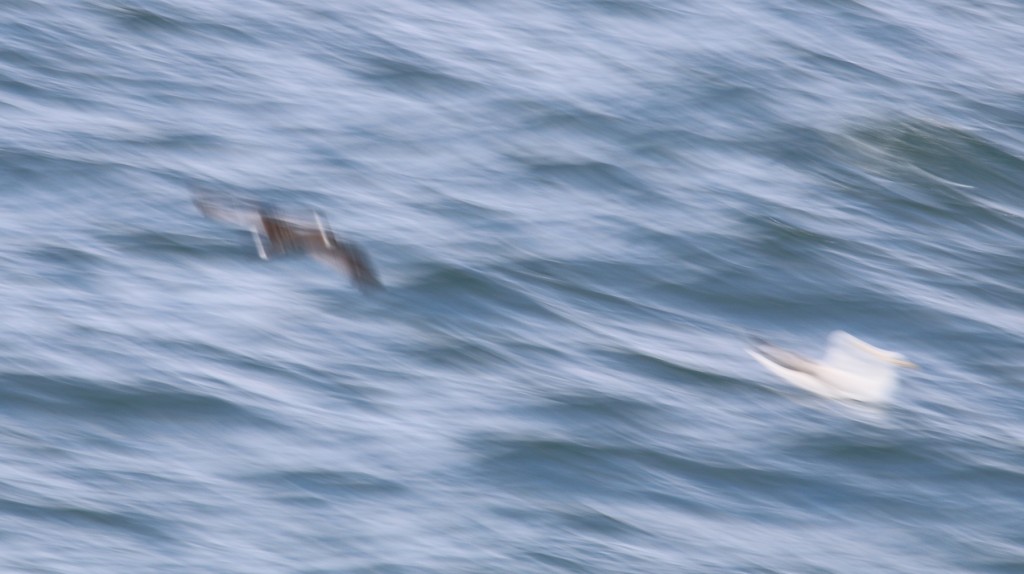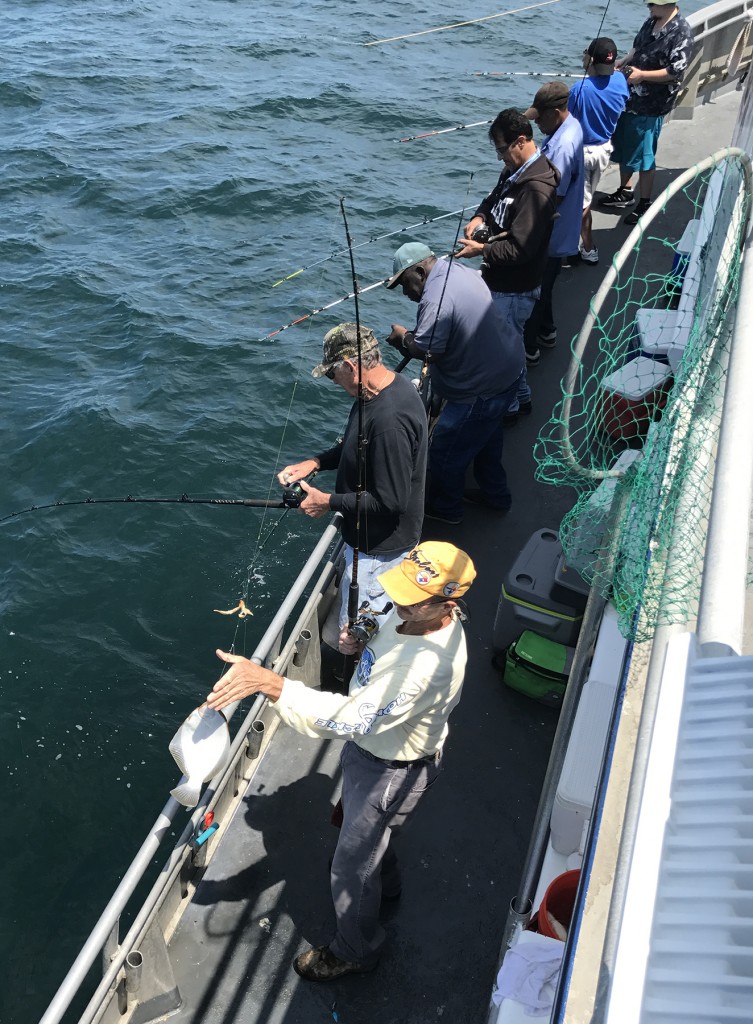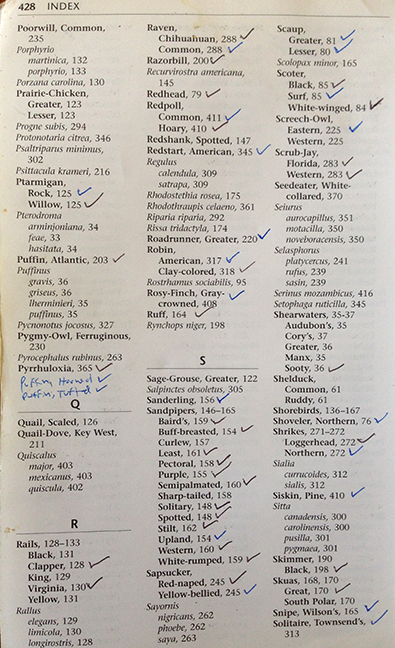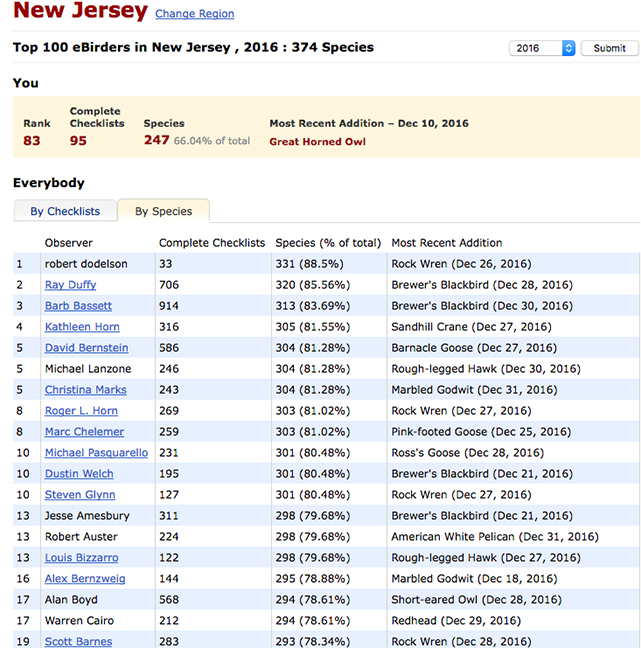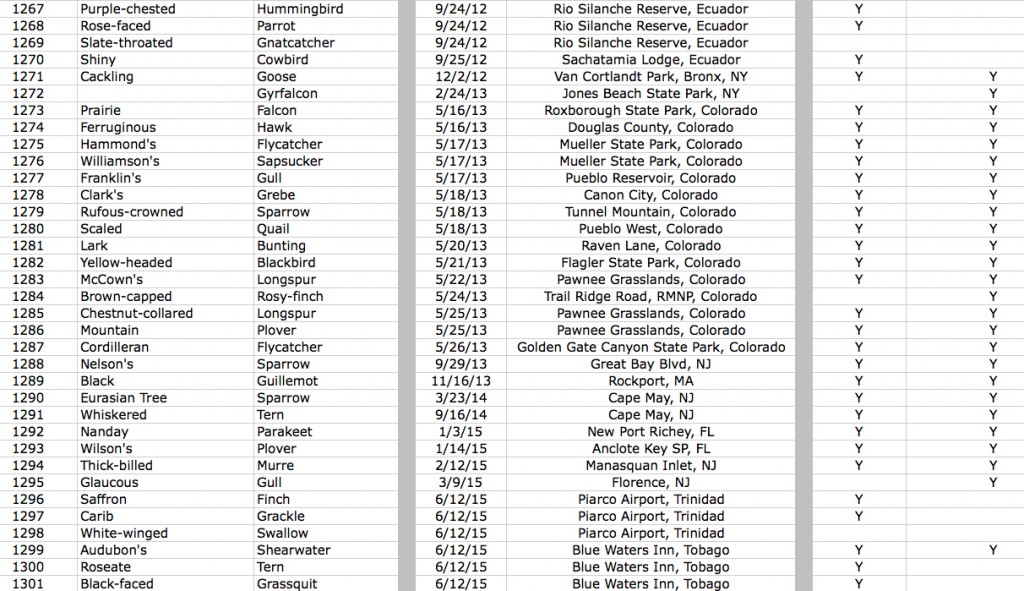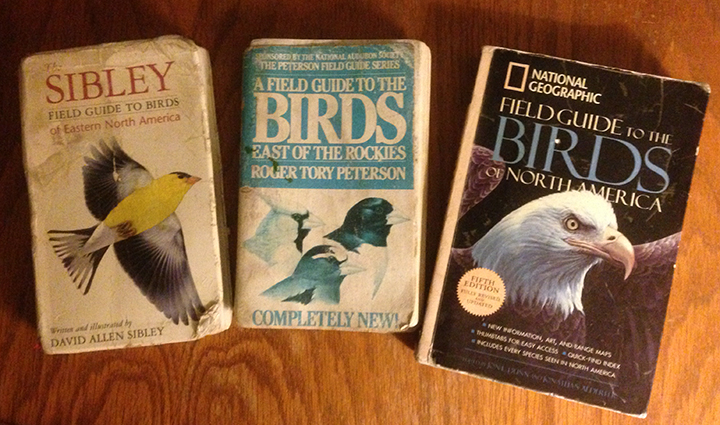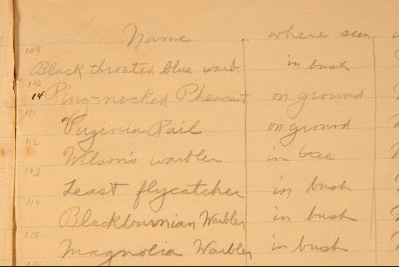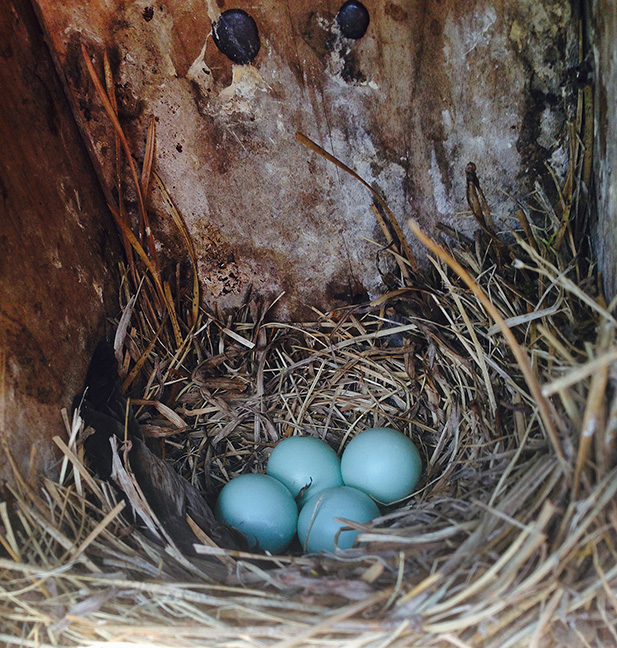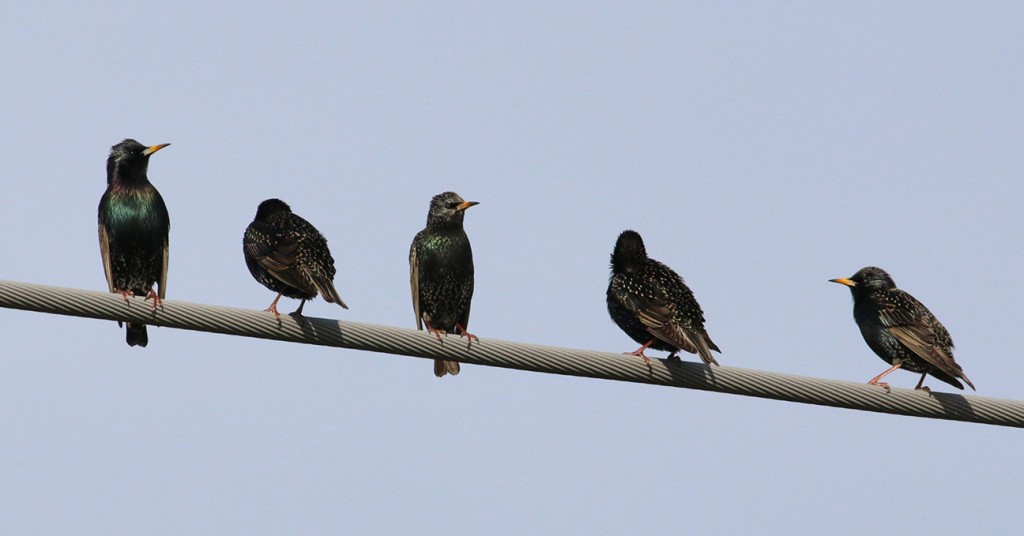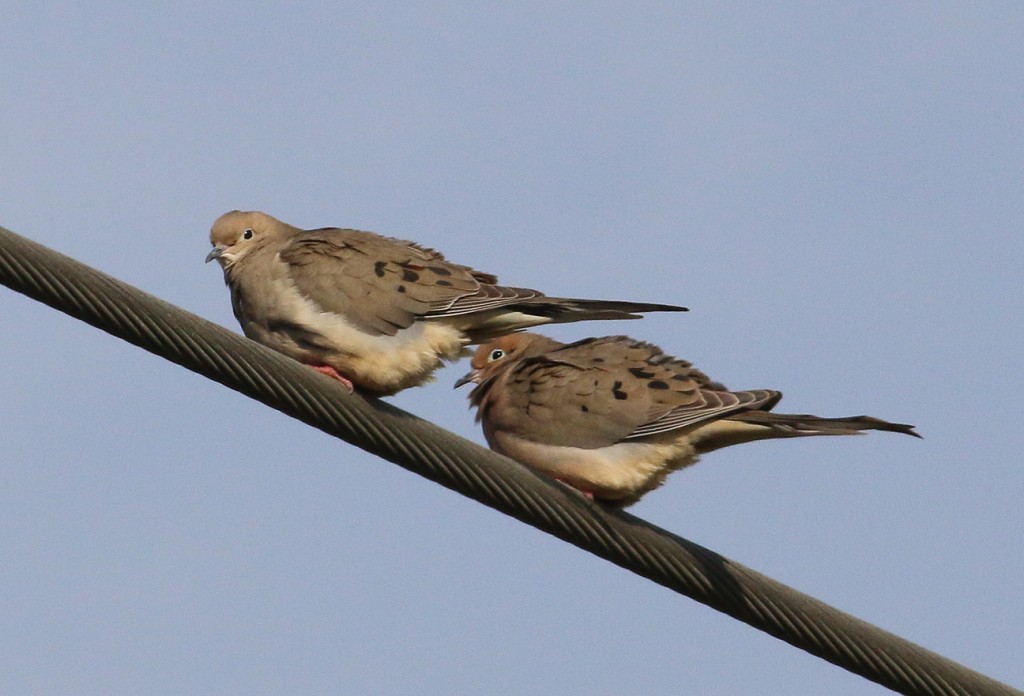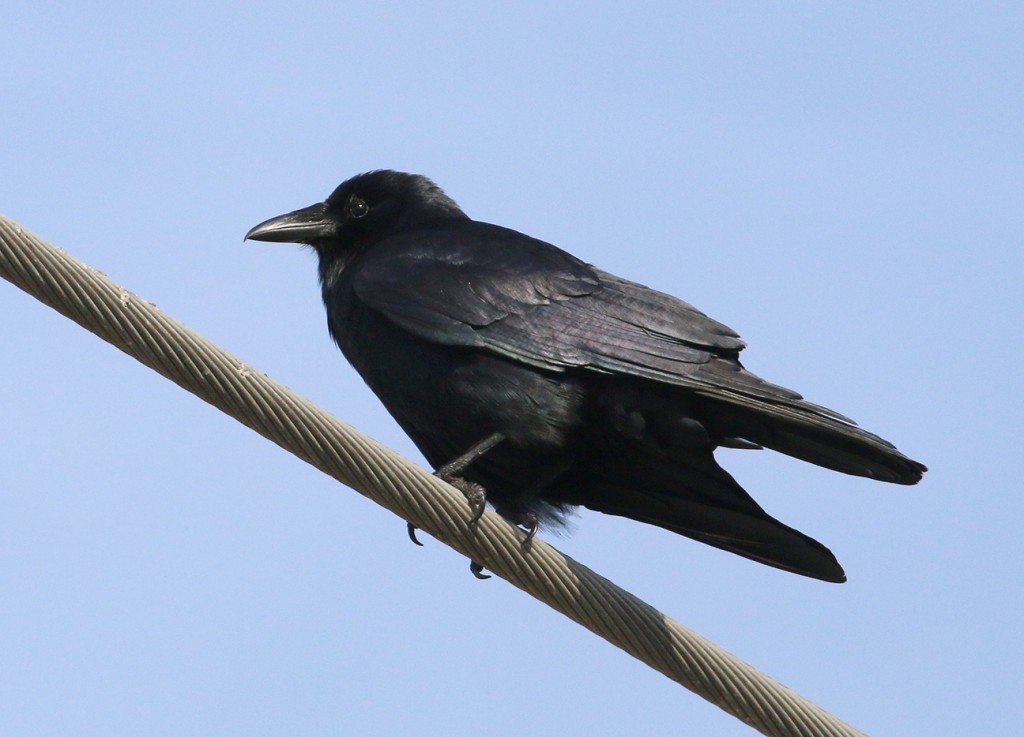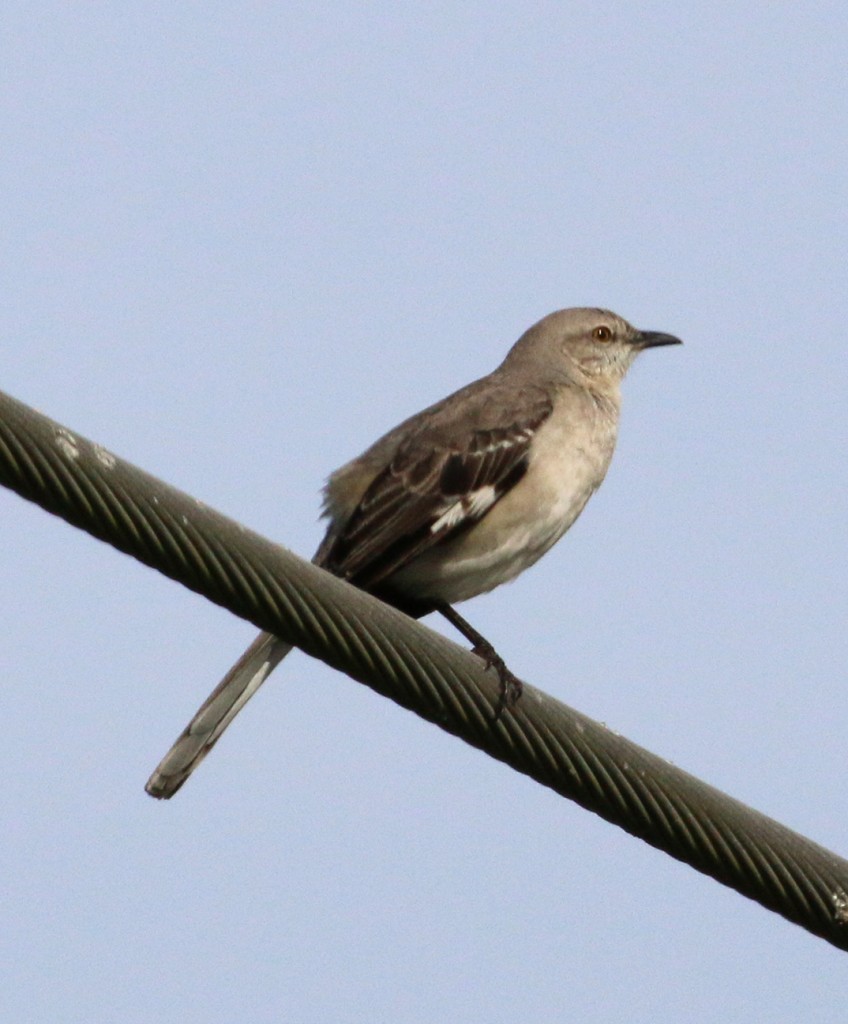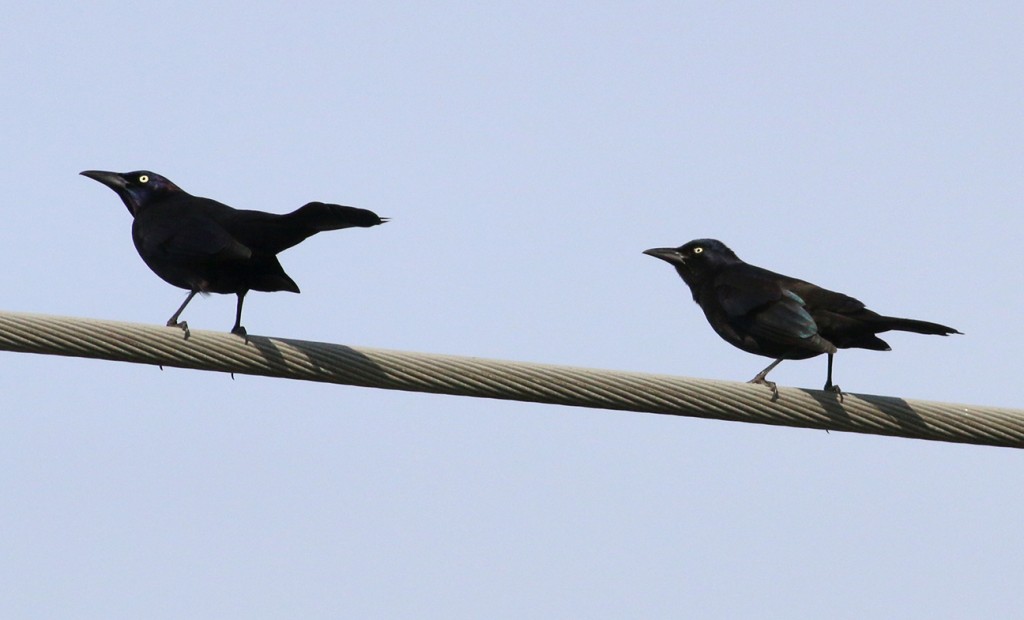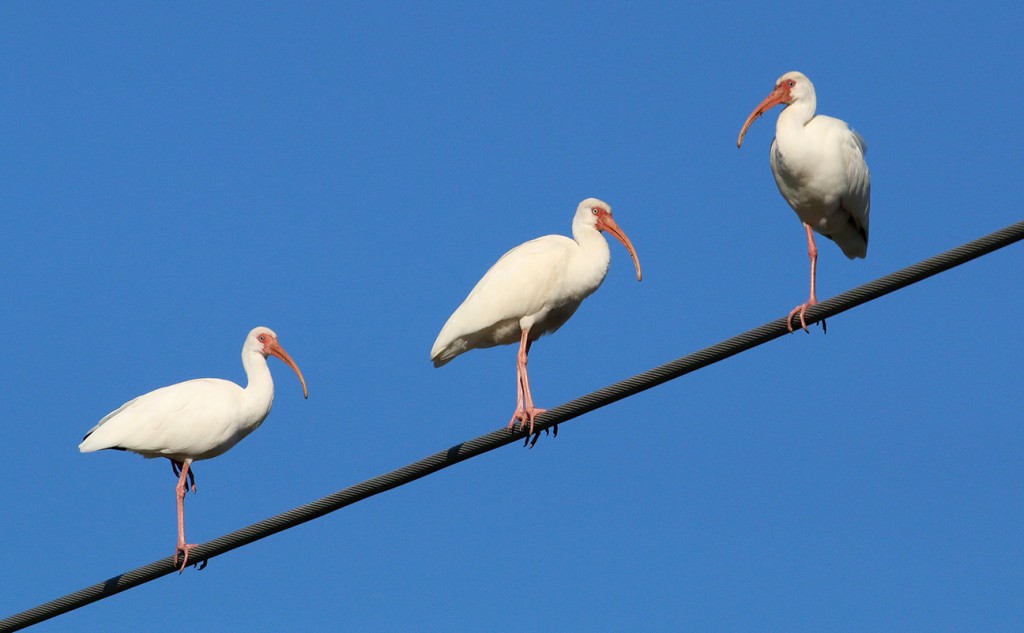OK, let’s start off this way: pelagic trips and pelagic birding are not for everybody. But are they for me? Are they for you? I just returned back from a 20-hour pelagic birding trip yesterday, so I’ll share some thoughts and experiences from that trip here.
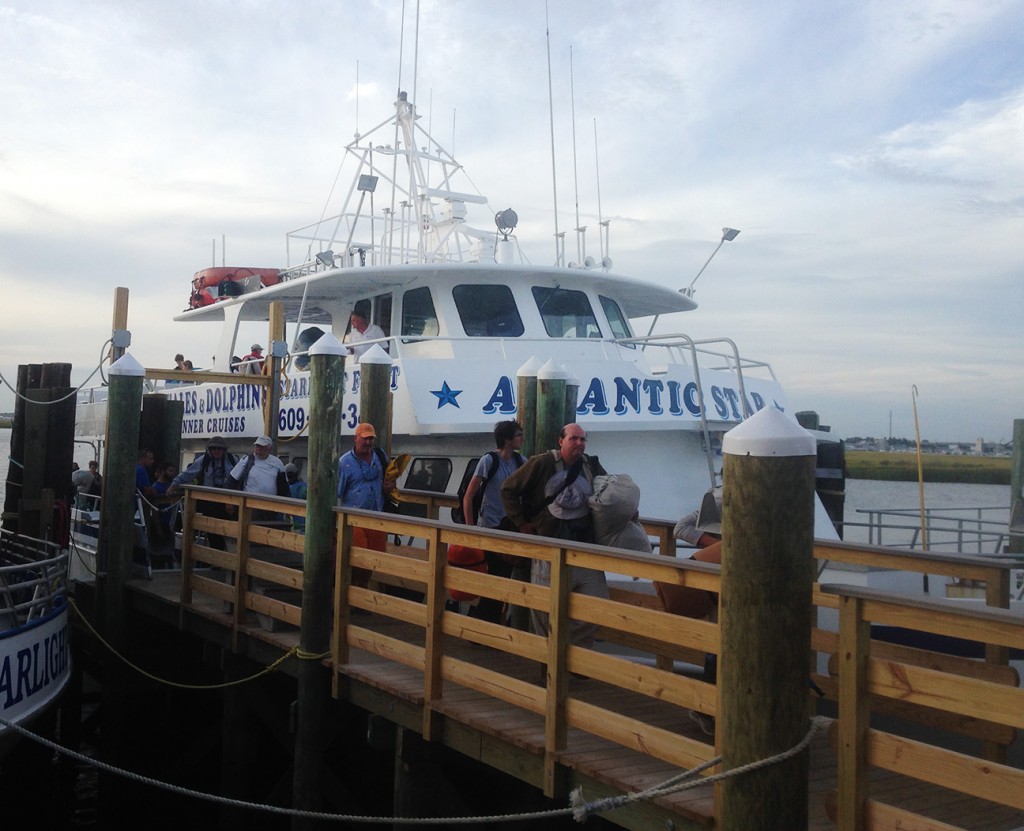
Birders unboarding after a successful pelagic.
First of all, why would anybody want to go on a pelagic trip? From a birding perspective, that’s not too hard to understand: there are plenty of species that are difficult or impossible to see from land, and thus to find those birds we need to go where they live…out to sea. Secondly, it’s a great change of pace to be in a completely different environment out on the ocean, away from those nasty biting insects, as you relax on a boat with cool ocean breezes wafting through your hair as you spot new birds, whales, dolphins, sharks, and other sea life.
After painting that idealized picture, why aren’t we all going on pelagics? Well, I like to think of myself as having a positive attitude, so I won’t dwell on the potential negatives, but they include unreliable sea or weather conditions for boating, the potential for seasickness, the cost, and distant birds. I’ll return back to these items after describing how this trip fared.
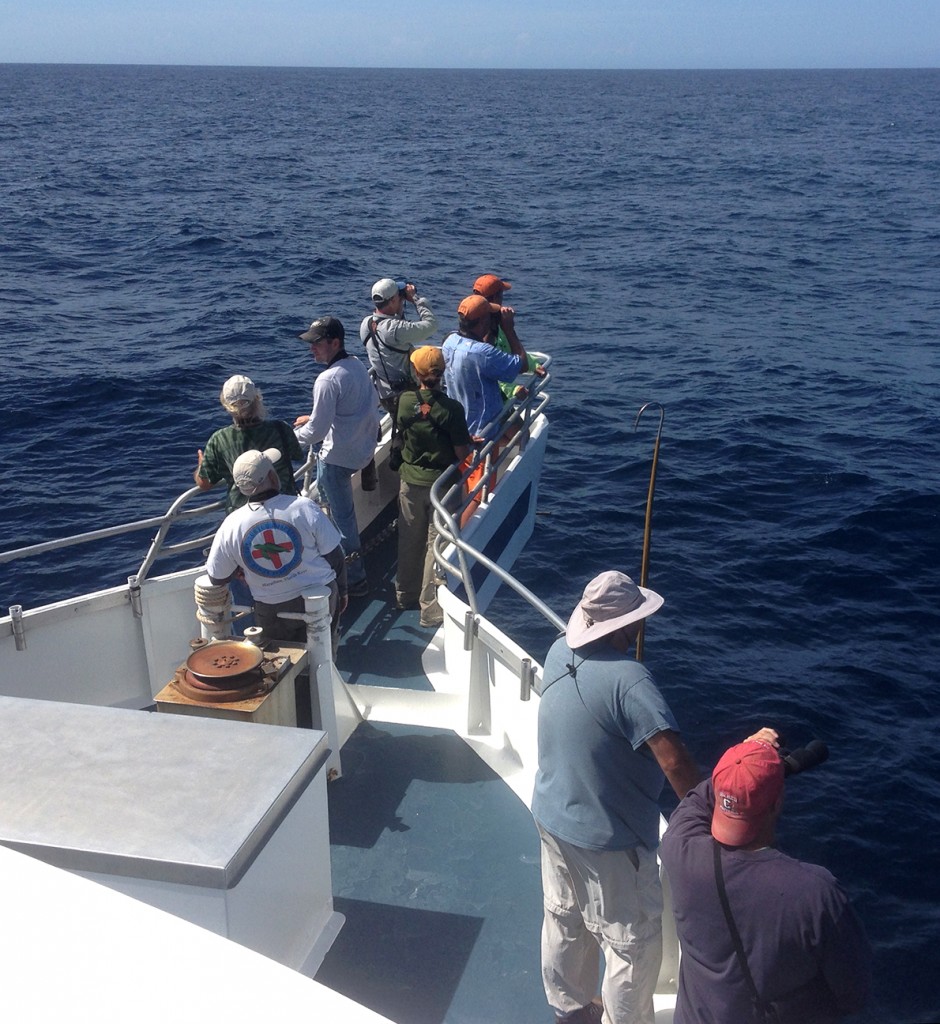
Pelagic birding: part of our group scanning the open seas from the bow of the boat.
This excursion out of Wildwood NJ was organized by See Life Paulagics, a company run by Paul Guris. It was scheduled as an 18 hour overnighter, leaving dock at 10:30 PM, sailing out 90 miles to the 6,000 ft deep waters of the offshore ocean canyon. Paul explained that the water here was ~76 degrees, around 6 degrees warmer than the near-shore ocean temperatures. That temperature differential and the currents that bring the warm water here is the magnet that attracts interesting birds. Considering that you lose sight of land at around 18 miles from shore, much of our sailing was well beyond sight of land. Target birds included four species of storm-petrels, four shearwaters, three jaegers, and a petrel or two if we are lucky, most of which would be lifers for me or birds that I have only seen once or twice.
Immediately after boarding our 110 ft vessel, the Atlantic Star, we selected sleeping arrangements on benches or on the decks and within an hour or so tried to catch some sleep. It was not easy for me. Despite being quite tired and having seas that weren’t really that rough, the constant up-and-down motion of the boat made it tough to get much rest. Somewhere around 4:30AM we arrived at our destination, and I was glad to hear the engines finally slowing down. Then we started rocking side-to-side, and that didn’t help me at all. Since I had only been on one previous pelagic (in Westport, WA), where I had no problems whatsoever, I didn’t take much precaution other than packing the suggested non-greasy foods. In retrospect, that wasn’t a great move, and taking some Bonine or Dramamine would have been a wise decision. It was still dark, but the mates started laying out a chum line, and within another half hour or so it was light enough to start seeing some birds. I was feeling a bit queasy and didn’t want to be hanging over the railing, but I was not the only one having problems, as another passenger was adding his previous meal to the chumline and others (but not all) clearly were affected. That didn’t help. For the first few hours the uneasiness continued, but by getting out in the open air, concentrating on viewing the birds and watching the horizon, and eating small amounts of dry food (breakfast bars, pretzels), eventually I was able to eliminate the queasiness and feel comfortable again.
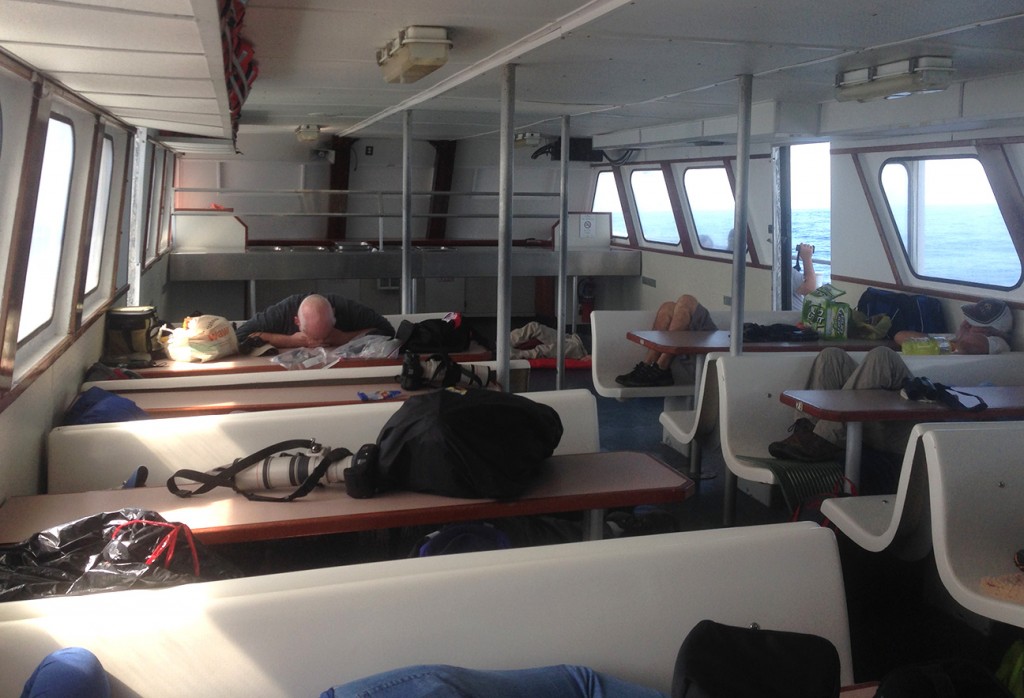
Inside the main cabin, with part of the group either recovering or resting during a long day.
The problem was that when the birding was probably the best in the early morning, I was at my worst and not in much of a mood for sorting through tough-to-ID birds through unsteady bins. Still, good birds were there. Wilson’s Storm-petrel was a nemesis bird for me, one that I have attempted to see from land, but with no success. Out here they were the most numerous species, with frequent groups of these dainty birds touching upon the water with their long legs. Unfortunately they were often too distant for great photos, but they were fun to see. Two other storm-petrels that are much tougher to find in NJ waters (Leach’s and Band-rumped) occasionally were found in the mix during the first hour or two, but at that point it was tough for me to focus on the birds. Later in the trip a fourth storm-petrel, White-faced Storm-petrel, was seen momentarily by a few passengers before it disappeared into a wave trough.
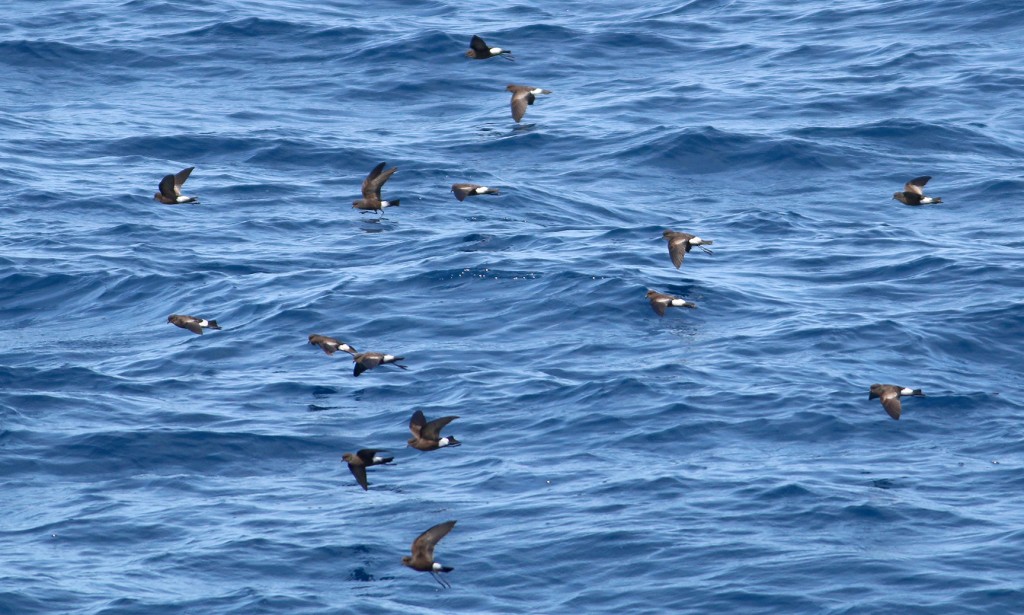
A flock of Wilson’s Storm-petrels. This species has been a nemesis bird for me. It can be seen from land, but I hadn’t seen them before today.
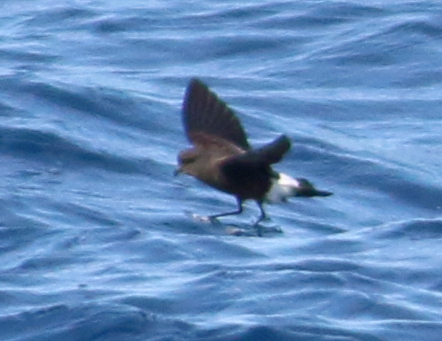
Cropped shot of a Wilson’s Storm-petrel.
The second most abundant bird today was Cory’s Shearwater. This is the largest shearwater in the world, with a wingspan of 44 inches. By its size, on this trip it could only be confused with the slightly smaller Great Shearwater, which was also present in decent numbers today. Cory’s has a gray hood, all-white undersides, and yellow bill, while Great Shearwater has black cap, black bill, and black streaks near the axillaries. Eventually I was able to ID them fairly easily. It was fun to see why they are called shearwaters, with amazing ability to fly low to the water, tilting occasionally to gain a bit of lift. The third shearwater that we saw today was the smaller Audubon’s Shearwater, a species that I saw last year in Tobago.
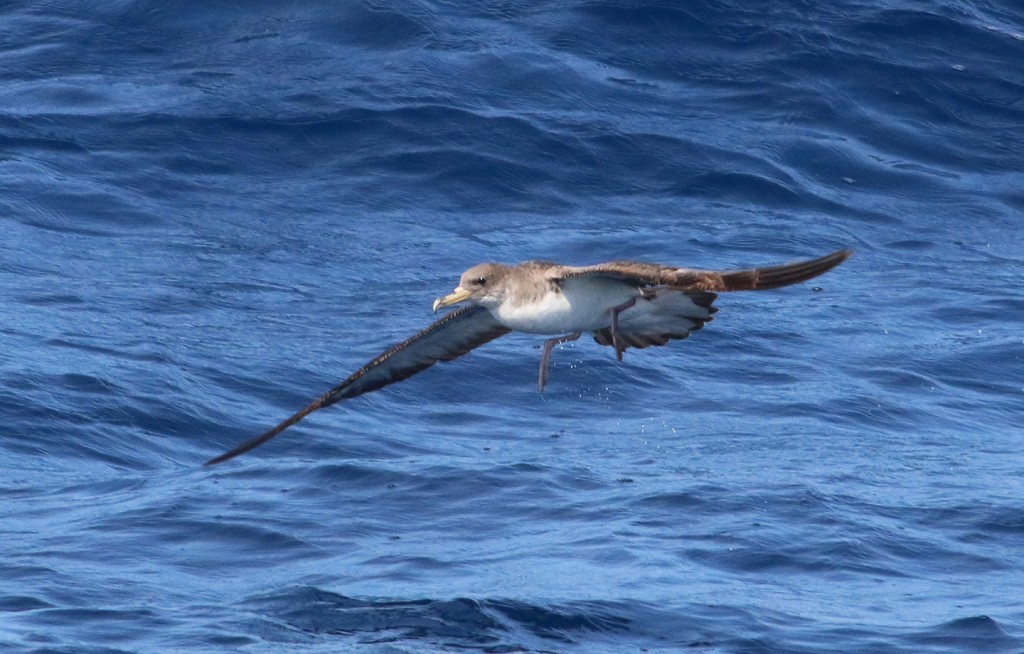
Cory’s Shearwater. It’s the largest shearwater in the world, best identified by its gray cap-and-neck combo and its yellow bill.
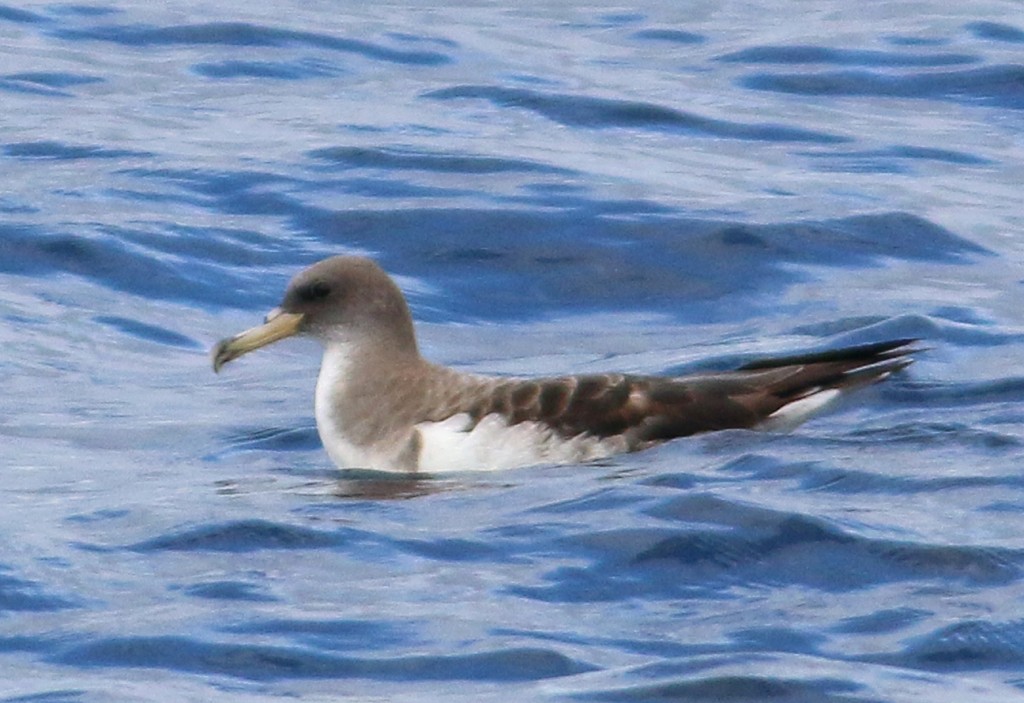
A Cory’s Shearwater on the water. From this angle you can see why they are in the tubenose family.
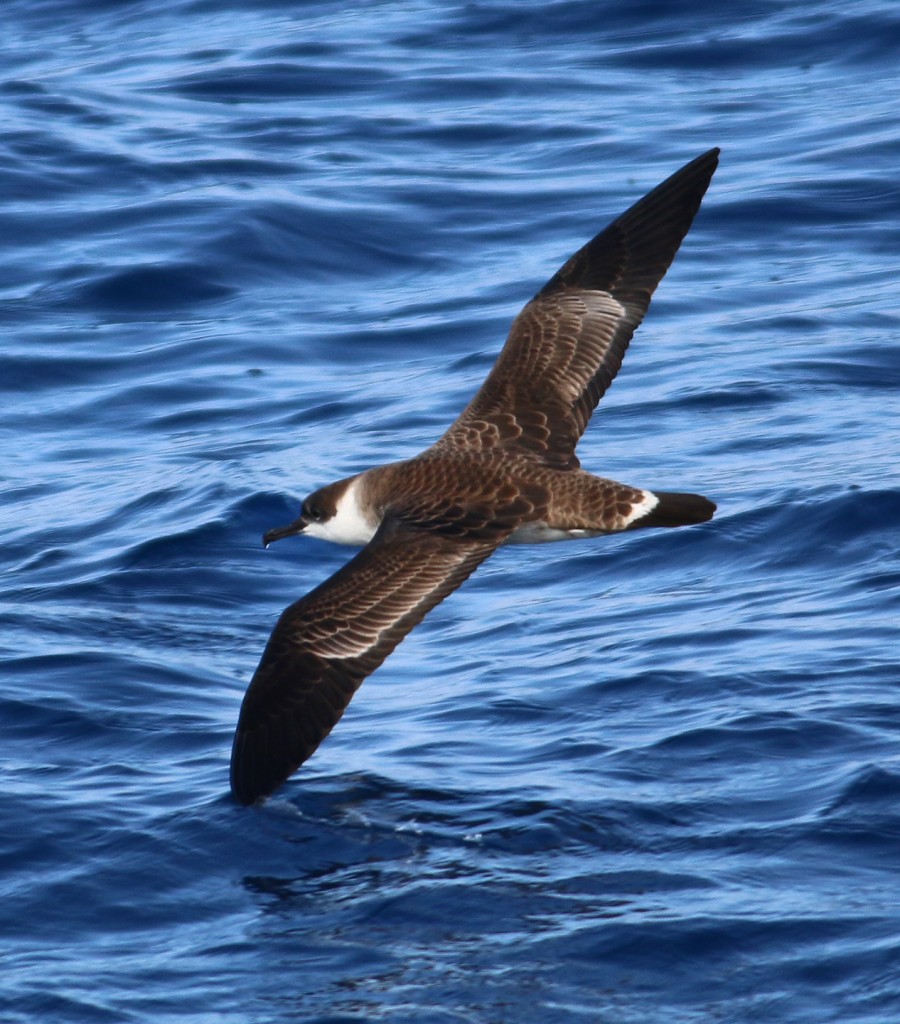
Here’s a Great Shearwater showing how they earned their name, with its wingtip actually in the water. It is distinguished from the similar-sized Cory’s Shearwater by its black cap, thin black bill, and narrow white rump band.
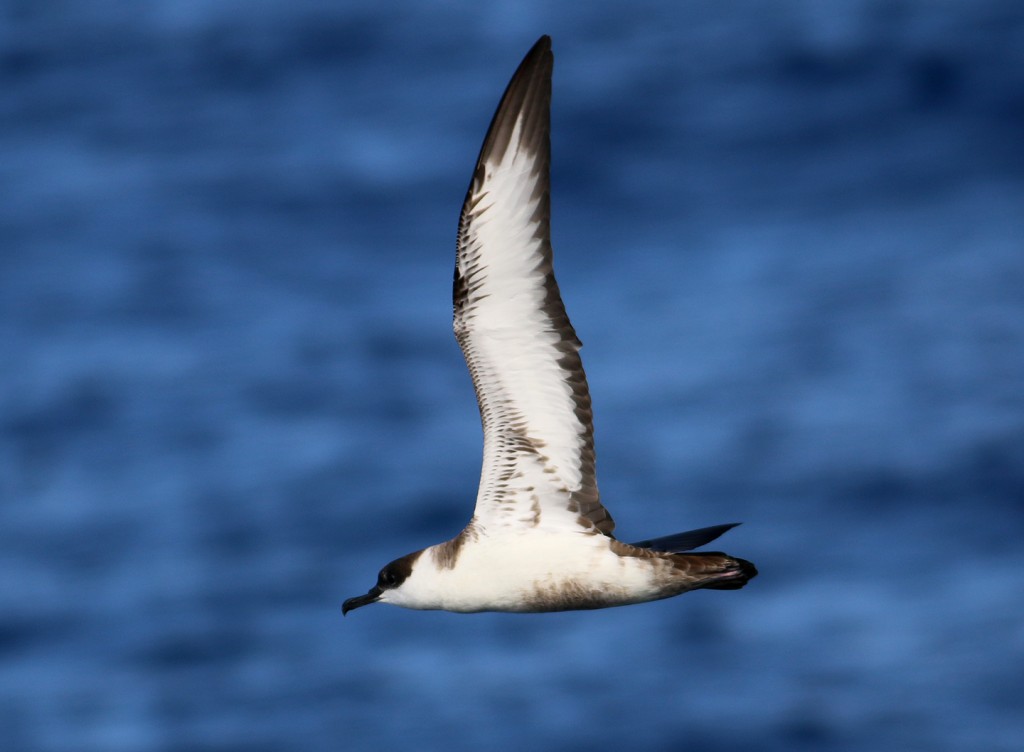
Undersides of a Great Shearwater. The marked underwing contrasts with the clean white underwing of Cory’s. Look at the length of those wings relative to the body!
The birding highlight of the day was seeing two Black-capped Petrels. In both cases the petrel was originally found on the water, mixed in with shearwaters. When Paul excitedly screamed out “Black-capped Petrel…second bird from the left”, anybody would recognize that it was a ‘good bird’ just by the volume of his voice. This was a well-behaved bird, flying left, then right, then back again, ensuring that everyone aboard had plenty of satisfactory views. Like a classic diva bird that knows it’s the star of the show.
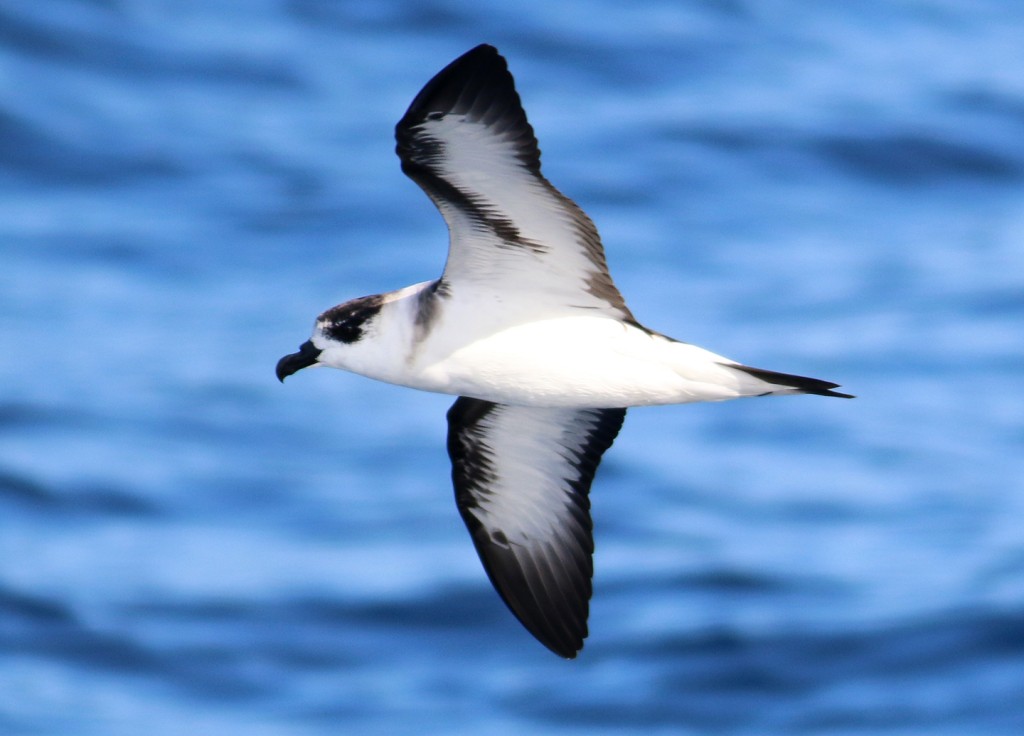
Black-capped Petrel. This bird of the day put on a great show. It’s a tough bird to see in NJ, as it’s a southern species that likes warm water. We saw two on this trip.
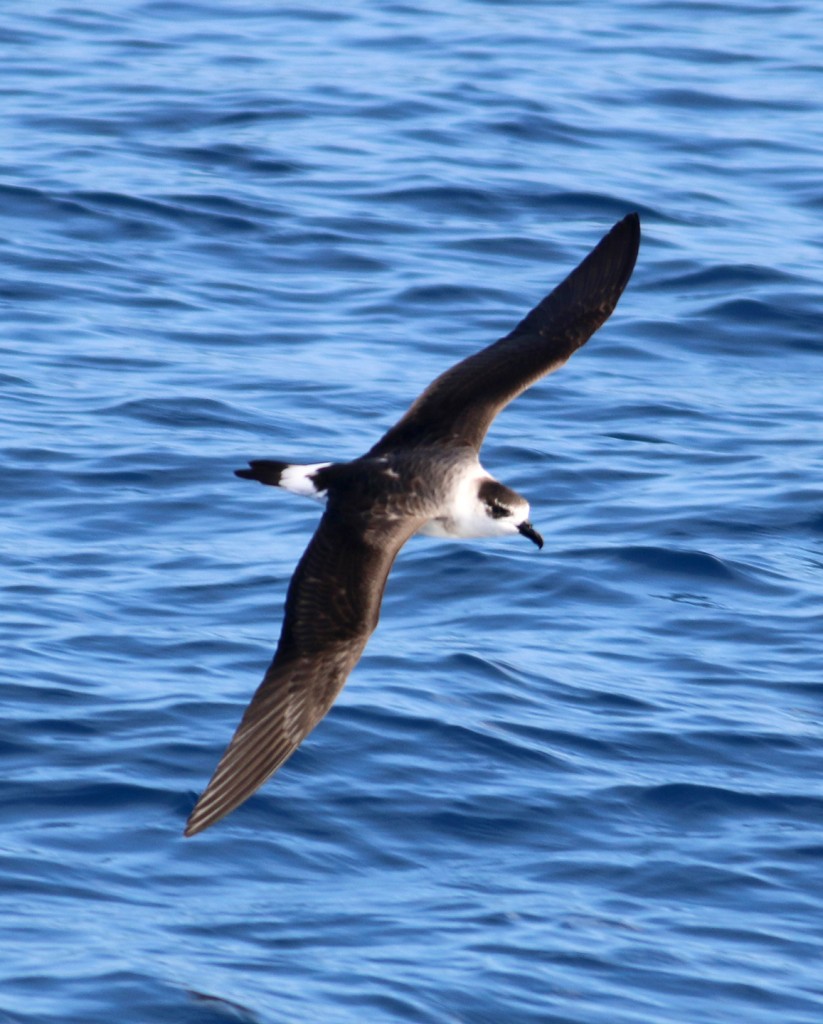
Soaring Black-capped Petrel. Note the large white rump patch that easily distinguishes it from the larger Great Shearwater.
As the trip progressed, the leaders occasionally would shout out ‘sky bird’. This was a sign that something different was being sighted, as the shearwaters, petrels, and storm-petrels tend to fly close to the water. Any bird flying high enough to be seen against the sky had a chance to be something else, with terns, gulls, and jaegers being on that list. In fact, the group did see eight distant Bridled Terns on this trip, a Parasitic Jaeger, and two Long-tailed Jaegers. One Long-tailed Jaeger must have taken cooperativity lessons from the Black-capped Petrel, as it sailed towards us and then continued directly over mid-ship. Nice.
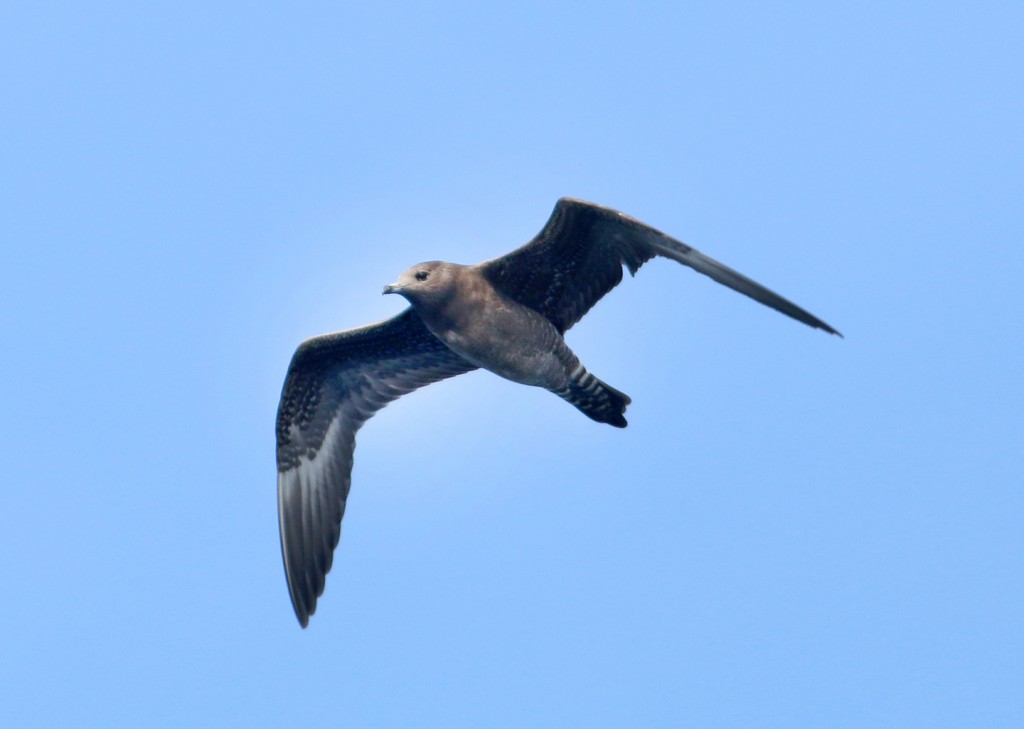
An immature Long-tailed Jaeger.
In addition to the birds, we were fortunate to see other types of sea life, including a Hammerhead Shark, a few Portuguese Man-o-Wars (or is it ‘Men-o-War’?), a flock of acrobatic Spotted Dolphins, a few Pilot Whales, a pair of likely Gervais’ Whales breaching, a Mola, and a few turtles. All great to see.
As we were returning back to port, the inevitable question returned: would I do it over again? And if so, what would I change? Or would I recommend this kind of trip to others? I think that any serious birder needs to try a pelagic to see if it is their cup of tea. To put this trip into perspective, four NJ review species (Black-capped Petrel, Leach’s Storm-petrel, Band-rumped Storm-petrel, and White-faced Storm-petrel) were seen on this outing. On the other hand, I would probably not recommend starting with an overnighter. The spring and fall warm-water trips in NJ need to get out to the canyons to reach the warm currents that the target species love, but for winter pelagics it is not necessary to go as far out to reach the target alcids and winter gulls. I’d definitely recommend starting with a shorter trip. And by all means take simple precautions and Bonine or Dramamine to avoid seasickness. The See Life Paulagics web site has suggestions for preventing seasickness; I should have heeded all of their advice instead of just some. Paul’s outfit is essentially the only option for pelagic trips in the NY/NJ/PA area, and they run a great ship, complete with multiple highly experienced leaders who are spotting and calling out tough birds, communicating with each other using a wireless microphone system. They lay out a chum line to try to draw birds in towards the boat, but will chase good birds (and mammals) when necessary to get better views. So will I become a regular member of the pelagic group? I doubt it. Will I go again? Yes. Maybe I’ll see you there at the dock.
